SCHEME OF WORK
NEW
WEEK TOPIC
1 Review of Last Year’s Work
2 Family Traits ( Genetics )
3 Environmental Hazards ( Soil Erosion and Flooding)
4 Environmental Hazards ( Bush Burning and Deforestation )
5 Environmental Hazards ( Desertification and Depletion of the Ozone Layer and its Effects )
6 Drug Abuse 111
7 Metabolism in Human Body
8 Sense Organs (Revision)
9 Reproductive Health (Revision)
10 Revision
OLD SCHEME
WEEKS TOPICS
1. Review of last term's work
2. The nervous system.
- The CNS (central nervous system) as centre of sensitivity
- The brain and the spinal cord.
- Simple reflex action and examples.
3. Sense organs (I): Eye and Ear
- Functions and diagrams
- Care and defects
4. The sense organs eye, ear, nose, tongue and skin and their functions.
5. Sense organs (II): Nose, Tongue and Skin.
- Functions and diagrams.
- Care.
6. The endocrine system (I)
- Meaning and definition
7. The endocrine system (II)
- Examples and locations.
- Functions
8. Communication (I)
- The media - meaning and definition
- Transfer of information through information technology e.g. Television, radio, etc.
- The internet - meaning and definition.
- Relevance of communication to human development and family life education.
9. Communication (II)
- Negative and positive use of the media and internet
- Portrayals of body image by the media.
10. Communication (III)
- Process, transfer of information through information technology.
- Definition of information technology (media)
- Qualities of good media programmes.
- How and where information technology is used e.g. radio, telephone and microphone.
11. Materials required for information technology e.g. generator
control panel, circuit breaker, sub-station, transformer line
support, transmission, feeder pillar, etc.
12. Revision
1ST TERM
WEEK 1
LESSON 1
TOPIC: THE NERVOUS SYSTEM
OBJECTIVE: At the end of the lesson, the students should be able to:
1. State the functions of the nervous system.
2. Mention the components of the nervous system.
CONTENT:
The nervous system is responsible for the coordination of all sensory activities of the body. It is a system of communication in all animals.

The Components of The Nervous System
The nervous system is made up of three major parts, these are:
1. Central nervous system (CNS)
2. The peripheral nervous system (nerves)
3. Sense organs.
The central nervous system (CNS) is the coordinating centre of the nervous system. Messages from the sense organs are brought here and interpreted. Information on what the body should do is also passed from here to the different parts of the body. The CNS is made up of the brain and the spinal cord.

The brain is the most complex organ in a human body and serves as the control centre of all body activities. It is made up of more than ten billion cells and it weighs 1.3 kg in adult.
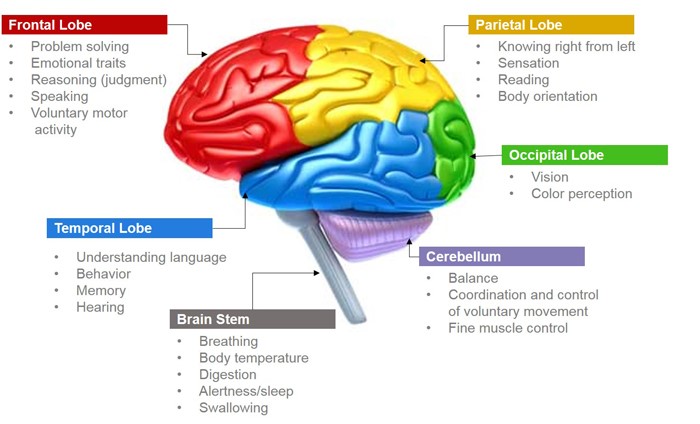
The brain has three major parts known as
(a) Cerebrum
(b) Cerebellum
(c) Medulla oblongata
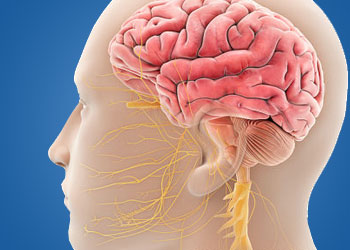
The cerebrum is the biggest portion and occupies the topmost and frontal areas. It receives impulses from the sense organs and returns information back to the appropriate effector organs i.e. the muscles and glands. It is responsible for memory, reasoning and intelligence in man.
Cerebellum is found at the base of the cerebrum or fore brain. It regulates and coordinates muscular movements like running, jumping, dancing and balance.
Medulla oblongata is found in the hind brain where it joins the lower part of the brain with spinal cord. It controls many involuntary actions like heart beat, breathing, digestion, coughing and sneezing etc.
EVALUATION:
State the functions of the nervous system.
Mention the components of the nervous system.
Mention the three parts of the brain.
ASSIGNMENT:
Draw the diagram of the nervous system.
further studies
http://kidshealth.org/kid/htbw/brain.html
http://www.cyh.com/HealthTopics/HealthT ... 52&id=2612
http://faculty.washington.edu/chudler/nsdivide.html
http://www.findingdulcinea.com/guides/S ... pg_00.html
LESSON 2
TOPIC: SPINAL CORD AND SIMPLE REFLEX ACTIONS
OBJECTIVE: At the end of the lesson, the students should be able to:
1. Mention the functions of the spinal cord.
2. Highlight simple reflex actions.
CONTENT:
SPINAL CORD
Spinal cord is a continuation of the brain. It lies in the spinal column and is approximately 45 cm and 1cm in diameter in an adult. It has a central core of grey matter surrounded by white matter. In cross section, the grey matter forms an H - shape.
The spinal cord coordinates simple reflex actions e.g. sneezing, knee jerk.
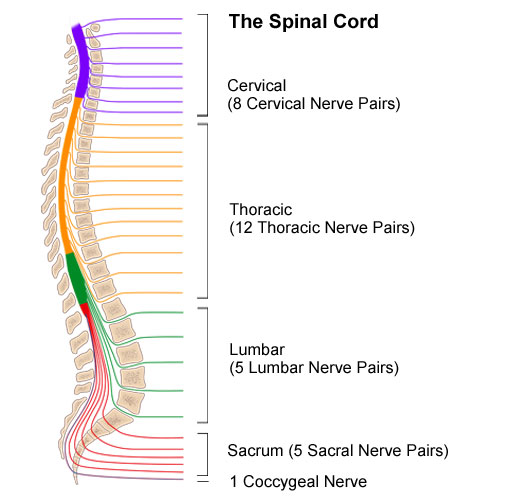
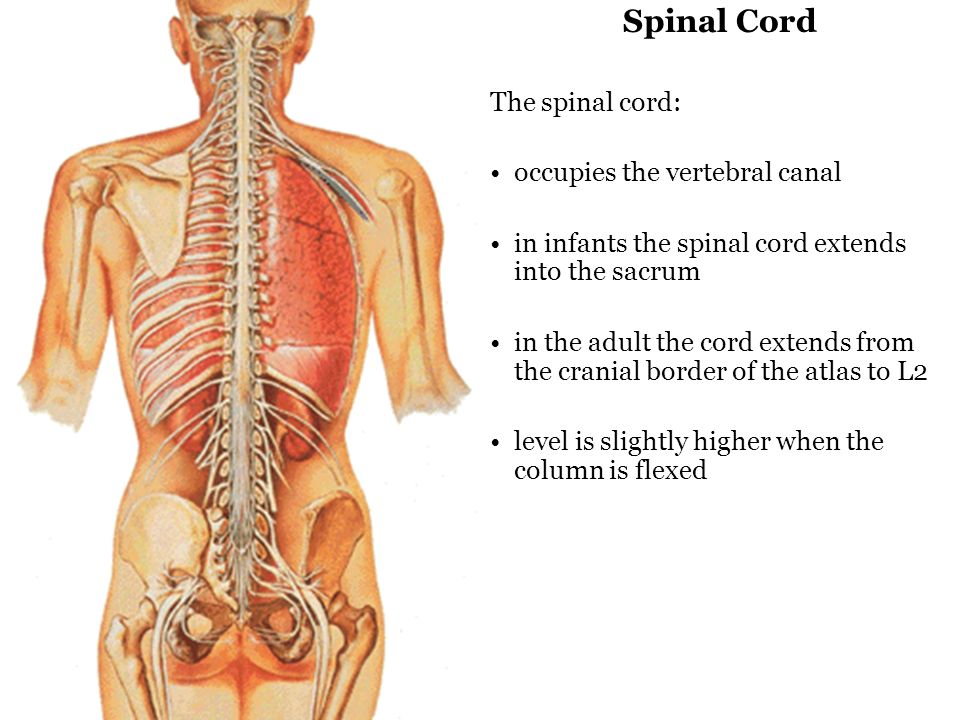
SIMPLE REFLEX ACTIONS
A simple reflex action is any behavior or action taken without thinking. They are actions that demand urgency, and in most cases they help to prevent the body from being harmed. It is controlled by the spinal cord. The brain later gives awareness of what has happened.

Examples of reflex actions include:
1. Secretion of saliva on seeing a delicious food.
2. Blinking and covering of the eyes.
3. Beating of the heart.
4. Coughing
5. Swallowing
6. Sneezing etc.
EVALUATION:
Define reflex action.
Mention examples of reflex action.
What are the functions of spinal cord?
further studies
http://kidshealth.org/kid/talk/qa/reflexes.html
http://www.findingdulcinea.com/guides/S ... pg_00.html
http://healthyliving.msn.com/pregnancy- ... s-system-1
http://www.factmonster.com/dk/science/e ... ystem.html
http://www.ivy-rose.co.uk/HumanBody/Ner ... nction.php
practice test
http://www.vtaide.com/png/nervous-mcq.htm
LESSON 3
TOPIC: FAMILY TRAITS (GENETICS)
CONTENT: 1. Family Traits (Skin Colour, Height, Albinism, etc.)
2. Meaning of Dominant and Recessive Traits
3. Importance of Family Traits – Intelligence, Disease, Resemblance, Family Genealogy
FAMILY TRAITS (SKIN COLOUR, HEIGHT, ALBINISM, ETC. )
Genetics is the scientific study of heredity and variation in living things. The transfer of materials which lead to heredity and variation occurs during reproduction in living things.
Heredity is a branch of genetics which studies how children or offspring take after their parents.
FAMILY TRAITS can be defined as transmittable characteristics which are passed from parents to offspring or children or progeny from one generation to another through reproduction. You may have your hair color as your mother or your eye color as your father.
We all have inherited traits that we share in common with others. Families share many traits in common because parents pass down inherited traits to their children. Yet, every person has a combination of traits that is unique to them. However, the modern science of genetics which seeks to understand the process of inheritance only began with the work of Gregor Mendel in the mid-19th century. Although he did not know the physical basis for heredity, Mendel observed that organisms inherit traits via discrete units of inheritance which are now genes. Gregor Mendel is the father of Genetics because his work on genetics formed the foundation for quantitative and scientific study of genetics.

EXAMPLES OF FAMILY TRAITS
1. Colour of skin ( Complexion )
2. Height ( Tallness or Shortness )
3. Colour of eyes
4. Colour of hair
5. Intelligence
6. Shape of nose
7. Blood group
8. Albinism
It should be noted that the transmission of traits from parents to offspring or children (heredity) only cannot determine the manifestation of the traits. The environment plays its own part as heredity is the nature while the environment is the nuture.
EVALUATION
1. Define the word family traits
2. List five family traits
3. The scientific study of heredity and variation is called----------
4. Traits are also called ---------------
5. ------------ is also referred to as progeny
6. Who is the father of genetics?
LESSON 4
MEANING OF DOMINANT AND RECESSIVE TRAITS
A dominant trait can be defined as a trait that is expressed in an offspring when two individuals with contracting traits or characteristics are crossed. Dominant traits are controlled by dominant genes.
A recessive trait can be defined as the traits from parents which do not produce any effects in the presence of dominant traits. Recessive traits are controlled by recessive genes.
Both parents have to be carriers of a recessive trait in order for a child to express that trait. If both parents are carriers, there is a 25% chance with each child to show the recessive trait.
The genes are the basic unit of heredity. They determine the nature of inherited characteristics or traits.

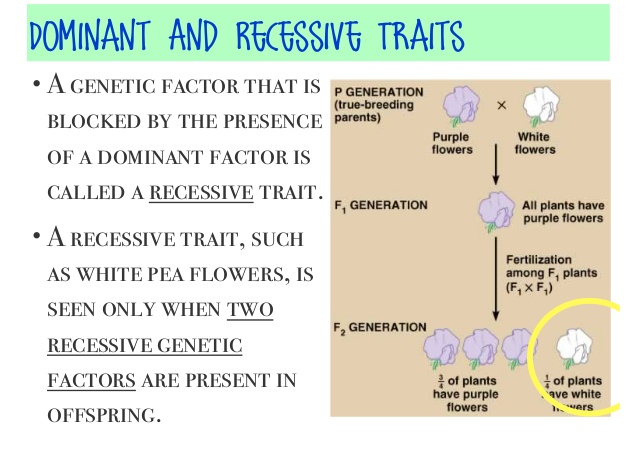
EVALUATION
1. Define dominant traits
2. Differentiate between dominant traits and recessive traits
3. Define genes
LESSON 5
IMPORTANCE OF FAMILY TRAITS
The importance of family traits cannot be over-emphasized. It is possible to predict traits to be expected in the offspring before marriage is conducted between two individuals. Family traits can be used to :
1. Determine the intelligence of individuals
2. Determine or detect certain diseases that run in the family. An example is sickle cell anemia
3. Determine in particular who does a child resemble in the family
4. Determine the blood group of an individual which could be A, B, AB or O.
5. Trace the family genealogy
The family genealogy or family tree or pedigrees are lines of generation of parents and offspring which trace the descendants of a man and his wife. A man with more than one wife will have one family tree for each of his wife.
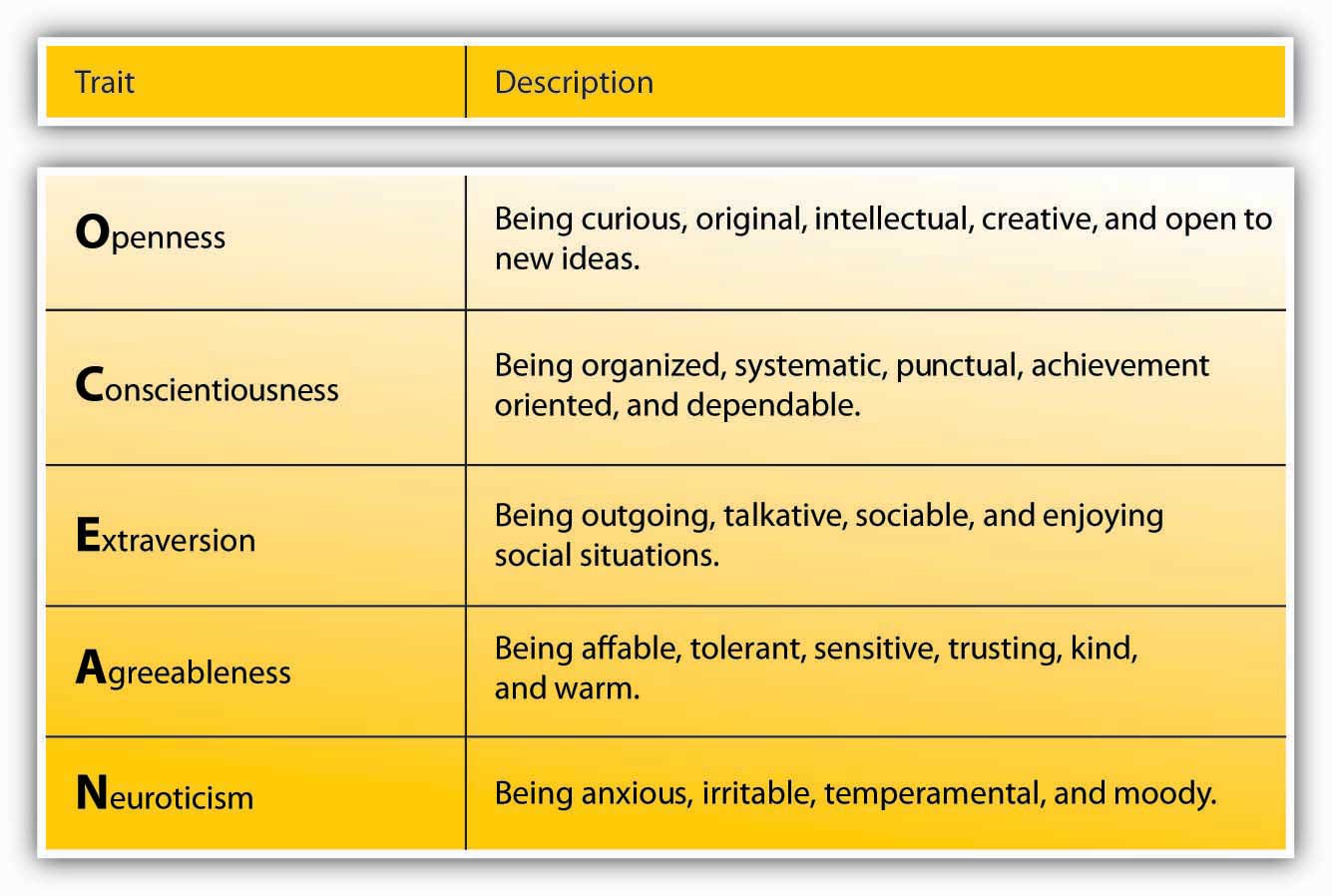
EVALUATION
1. State five importance of family traits
2. Explain family genealogy
Reading Assignment
Basic Science made easy for Nigerian Junior Secondary Schools Bk3 by F. I. Kehinde pgs 19-21
ASSIGNMENT
Basic Science made easy for Nigerian Junior Secondary Schools Bk3 by F. I. Kehinde pgs 19-21
1. Write out five noticeable traits or characteristics you inherited from your parents
REFERENCES:
1. Basic Science Made Easy for Nigerian Junior Secondary Schools Book 3 by F. I. Kehinde
2. Functional Basic Science for Junior Secondary Schools, Book 3 by c. U. Onyirioha et al.
TOPIC: THE NERVOUS SYSTEM
OBJECTIVE: At the end of the lesson, the students should be able to:
1. State the functions of the nervous system.
2. Mention the components of the nervous system.
CONTENT:
The nervous system is responsible for the coordination of all sensory activities of the body. It is a system of communication in all animals.

The Components of The Nervous System
The nervous system is made up of three major parts, these are:
1. Central nervous system (CNS)
2. The peripheral nervous system (nerves)
3. Sense organs.
The central nervous system (CNS) is the coordinating centre of the nervous system. Messages from the sense organs are brought here and interpreted. Information on what the body should do is also passed from here to the different parts of the body. The CNS is made up of the brain and the spinal cord.

The brain is the most complex organ in a human body and serves as the control centre of all body activities. It is made up of more than ten billion cells and it weighs 1.3 kg in adult.

The brain has three major parts known as
(a) Cerebrum
(b) Cerebellum
(c) Medulla oblongata

The cerebrum is the biggest portion and occupies the topmost and frontal areas. It receives impulses from the sense organs and returns information back to the appropriate effector organs i.e. the muscles and glands. It is responsible for memory, reasoning and intelligence in man.
Cerebellum is found at the base of the cerebrum or fore brain. It regulates and coordinates muscular movements like running, jumping, dancing and balance.
Medulla oblongata is found in the hind brain where it joins the lower part of the brain with spinal cord. It controls many involuntary actions like heart beat, breathing, digestion, coughing and sneezing etc.
EVALUATION:
State the functions of the nervous system.
Mention the components of the nervous system.
Mention the three parts of the brain.
ASSIGNMENT:
Draw the diagram of the nervous system.
further studies
http://kidshealth.org/kid/htbw/brain.html
http://www.cyh.com/HealthTopics/HealthT ... 52&id=2612
http://faculty.washington.edu/chudler/nsdivide.html
http://www.findingdulcinea.com/guides/S ... pg_00.html
LESSON 2
TOPIC: SPINAL CORD AND SIMPLE REFLEX ACTIONS
OBJECTIVE: At the end of the lesson, the students should be able to:
1. Mention the functions of the spinal cord.
2. Highlight simple reflex actions.
CONTENT:
SPINAL CORD
Spinal cord is a continuation of the brain. It lies in the spinal column and is approximately 45 cm and 1cm in diameter in an adult. It has a central core of grey matter surrounded by white matter. In cross section, the grey matter forms an H - shape.
The spinal cord coordinates simple reflex actions e.g. sneezing, knee jerk.


SIMPLE REFLEX ACTIONS
A simple reflex action is any behavior or action taken without thinking. They are actions that demand urgency, and in most cases they help to prevent the body from being harmed. It is controlled by the spinal cord. The brain later gives awareness of what has happened.

Examples of reflex actions include:
1. Secretion of saliva on seeing a delicious food.
2. Blinking and covering of the eyes.
3. Beating of the heart.
4. Coughing
5. Swallowing
6. Sneezing etc.
EVALUATION:
Define reflex action.
Mention examples of reflex action.
What are the functions of spinal cord?
further studies
http://kidshealth.org/kid/talk/qa/reflexes.html
http://www.findingdulcinea.com/guides/S ... pg_00.html
http://healthyliving.msn.com/pregnancy- ... s-system-1
http://www.factmonster.com/dk/science/e ... ystem.html
http://www.ivy-rose.co.uk/HumanBody/Ner ... nction.php
practice test
http://www.vtaide.com/png/nervous-mcq.htm
LESSON 3
TOPIC: FAMILY TRAITS (GENETICS)
CONTENT: 1. Family Traits (Skin Colour, Height, Albinism, etc.)
2. Meaning of Dominant and Recessive Traits
3. Importance of Family Traits – Intelligence, Disease, Resemblance, Family Genealogy
FAMILY TRAITS (SKIN COLOUR, HEIGHT, ALBINISM, ETC. )
Genetics is the scientific study of heredity and variation in living things. The transfer of materials which lead to heredity and variation occurs during reproduction in living things.
Heredity is a branch of genetics which studies how children or offspring take after their parents.
FAMILY TRAITS can be defined as transmittable characteristics which are passed from parents to offspring or children or progeny from one generation to another through reproduction. You may have your hair color as your mother or your eye color as your father.
We all have inherited traits that we share in common with others. Families share many traits in common because parents pass down inherited traits to their children. Yet, every person has a combination of traits that is unique to them. However, the modern science of genetics which seeks to understand the process of inheritance only began with the work of Gregor Mendel in the mid-19th century. Although he did not know the physical basis for heredity, Mendel observed that organisms inherit traits via discrete units of inheritance which are now genes. Gregor Mendel is the father of Genetics because his work on genetics formed the foundation for quantitative and scientific study of genetics.

EXAMPLES OF FAMILY TRAITS
1. Colour of skin ( Complexion )
2. Height ( Tallness or Shortness )
3. Colour of eyes
4. Colour of hair
5. Intelligence
6. Shape of nose
7. Blood group
8. Albinism
It should be noted that the transmission of traits from parents to offspring or children (heredity) only cannot determine the manifestation of the traits. The environment plays its own part as heredity is the nature while the environment is the nuture.
EVALUATION
1. Define the word family traits
2. List five family traits
3. The scientific study of heredity and variation is called----------
4. Traits are also called ---------------
5. ------------ is also referred to as progeny
6. Who is the father of genetics?
LESSON 4
MEANING OF DOMINANT AND RECESSIVE TRAITS
A dominant trait can be defined as a trait that is expressed in an offspring when two individuals with contracting traits or characteristics are crossed. Dominant traits are controlled by dominant genes.
A recessive trait can be defined as the traits from parents which do not produce any effects in the presence of dominant traits. Recessive traits are controlled by recessive genes.
Both parents have to be carriers of a recessive trait in order for a child to express that trait. If both parents are carriers, there is a 25% chance with each child to show the recessive trait.
The genes are the basic unit of heredity. They determine the nature of inherited characteristics or traits.


EVALUATION
1. Define dominant traits
2. Differentiate between dominant traits and recessive traits
3. Define genes
LESSON 5
IMPORTANCE OF FAMILY TRAITS
The importance of family traits cannot be over-emphasized. It is possible to predict traits to be expected in the offspring before marriage is conducted between two individuals. Family traits can be used to :
1. Determine the intelligence of individuals
2. Determine or detect certain diseases that run in the family. An example is sickle cell anemia
3. Determine in particular who does a child resemble in the family
4. Determine the blood group of an individual which could be A, B, AB or O.
5. Trace the family genealogy
The family genealogy or family tree or pedigrees are lines of generation of parents and offspring which trace the descendants of a man and his wife. A man with more than one wife will have one family tree for each of his wife.

EVALUATION
1. State five importance of family traits
2. Explain family genealogy
Reading Assignment
Basic Science made easy for Nigerian Junior Secondary Schools Bk3 by F. I. Kehinde pgs 19-21
ASSIGNMENT
Basic Science made easy for Nigerian Junior Secondary Schools Bk3 by F. I. Kehinde pgs 19-21
1. Write out five noticeable traits or characteristics you inherited from your parents
REFERENCES:
1. Basic Science Made Easy for Nigerian Junior Secondary Schools Book 3 by F. I. Kehinde
2. Functional Basic Science for Junior Secondary Schools, Book 3 by c. U. Onyirioha et al.
WEEK 2
LESSON 6
TOPIC: SENSE ORGANS
OBJECTIVE: At the end of the lesson, the students should be able to:
1. Mention the sense organs.
2. State the functions of the eye.
3. Mention the three layers of the eye.
CONTENT:
SENSE ORGANS
These are organs which help us to detect changes in our environment, they are specialized parts of the body that give information about the world around us and help to avoid danger. All the stimuli received by all the sense organs are coordinated and interpreted by the brain and spinal cord.


The sense organs are:
1. The eye for sense of vision.
2. The nose for sense of smell.
3. The ear for sense of sound.
4. The skin for sense of touch, pressure, heat and cold.
5. The tongue for sense of taste.
THE EYE
The eye is made up of three layers.
1. The outer layer which is known as sclera. This layer is responsible for protecting the inner structure of the eye. The sclera transparent part is called the cornea.
2. Choroid: this is the middle coat of the eye, this part is rich in blood and nutrient and is responsible for the supply of food to the cells of the eye.
3. Retina is the innermost part of the eye, this layer is very sensitive to light and contains cells which are called rods and cones. The rods help us to see well at night and are also responsible for seeing objects in black and white,. The cones on the other hand are responsible for colour vision. Images are formed on the retina.
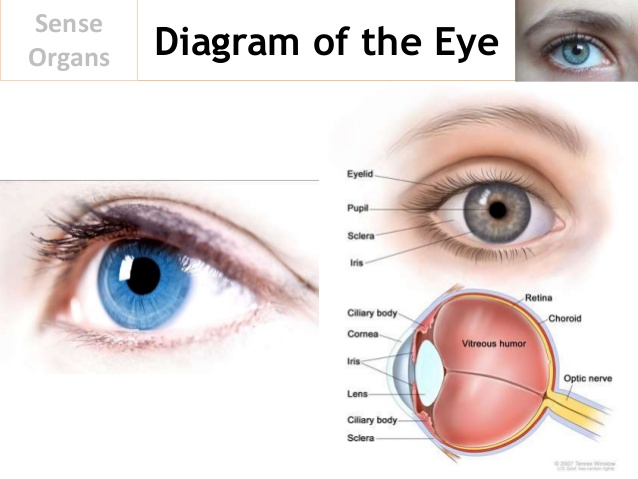
EVALUATION:
Mention the sense organs.
State the functions of the sense organs.
Mention and state the functions of the three layers of the eye.
further studies
http://faculty.washington.edu/chudler/eyetr.html
http://www.sciencekids.co.nz/sciencefac ... /eyes.html
http://www.scientificpsychic.com/workbook/chapter2.htm
practice test
http://www.proprofs.com/quiz-school/sto ... rgans-quiz
http://www.funtrivia.com/playquiz/quiz3 ... f5220.html
LESSON 7
TOPIC: EAR
OBJECTIVE: At the end of the lesson, the students should be able to:
1. State the functions of the ear.
2. Mention the three parts of the ear.
CONTENT:
The ear is the sense organ for learning and balancing in mammals. The ear is made up of three parts.
i. Outer ear
ii. Middle ear
iii. Inner ear
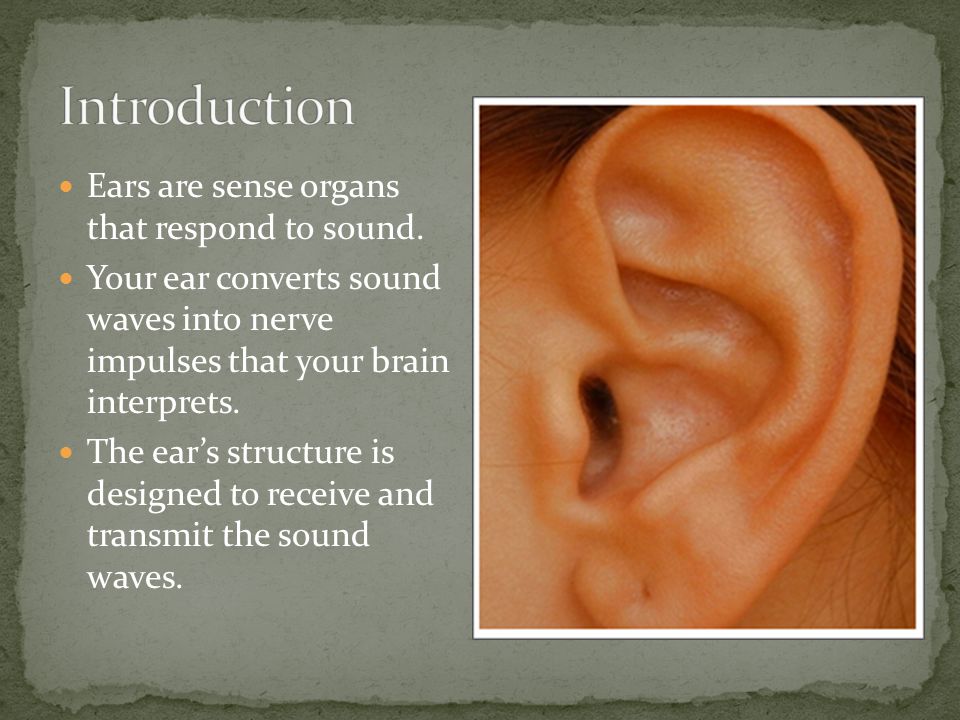
The outer ear consists of the pinna which is made of cartilage and the ear canal. The ear canal leads to the ear drum or tympanis membrane.
The middle ear contains the thypanic membrane, the three ear bones - auditory ossicles, made up of malleus (hammer) incus (anvil) and stapes (stirrup).
The inner ear is a cavity that is filled with the liquid called perilymph. The perilymph surrounds the sensory structure in the ear. The sensory structures are cochlea and the semi-circular canals are concerned with balance. Both the cochlea and semi - circular canals are fitted with endolymph.
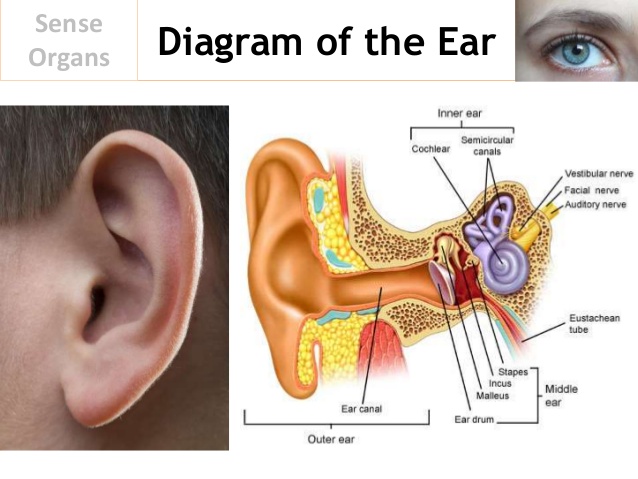
EVALUATION:
What are the functions of the ear?
Mention and describe the three layers of the ear.
ASSIGNMENT:
What is the name of the fluid in the ear and what is its function?
further studies
http://kidsresearchexpress-5.blogspot.c ... rgans.html
http://www.factmonster.com/ipka/A0932466.html
http://www.scientificpsychic.com/workbook/chapter2.htm
practice test
http://www.proprofs.com/quiz-school/sto ... rgans-quiz
http://www.funtrivia.com/playquiz/quiz3 ... f5220.html
LESSON 8
TOPIC: ENVIRONMENTAL HAZARDS (SOIL EROSION AND FLOODING)
CONTENT: 1. Definition of Soil Erosion - Causes, Effects and Control of Soil Erosion
2. Definition of Flooding – Causes, Effects of Flooding on Communities and
Farmlands, Control of Flooding and Drainage Patterns
DEFINITION OF SOIL EROSION
Environmental hazard is a term used for any situation or state of events which poses a threat to the surrounding environment and adversely affect plants and animals
SOIL EROSION is the washing away of the soil by heavy rain or wind resulting to the formation of gully and landslides and leaving behind silt on which plants can no longer grow.
Soil erosion can also be defined as the removal of topsoil faster than the soil forming processes can replace it, due to natural, animal, and human activity (overgrazing, over cultivation, forest clearing, mechanized farming, etc.). Soil erosion results in land infertility, leads to desertification and devastating flooding.
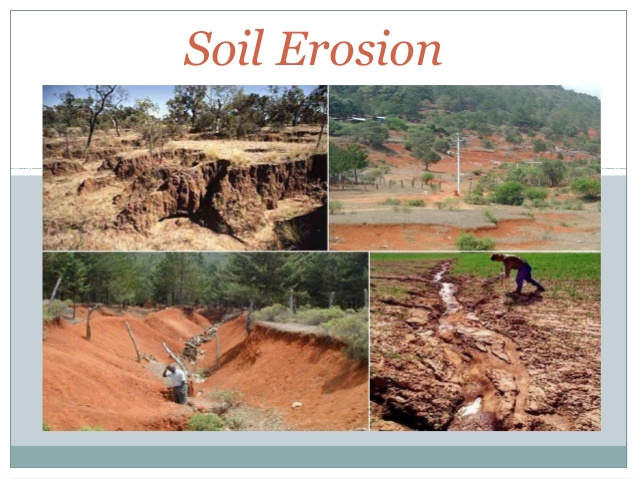
CAUSES OF SOIL EROSION
1. Excessive Rain fall: Due to excessive rain fall, top fertile soil is washed away.
2. Human activities: Human activities accelerate disappearance of protective cover of natural vegetation and cause soil erosion.
3. Over grazing: Over grazing leads to the absence of ground-vegetation, causes gradual depletion of soil organisms and soil erosion.
4. Land use: Humans play a major role in soil erosion through their use and abuse of natural resources, for example deforestation, grazing, arable land use, faulty farming systems, high crop intensity, construction, mining, etc.
5. Climate: The two most important climatic factors having a direct effect on erosion are precipitation and wind velocity.
6. Landforms: Slope, gradient, slope length and shape of slope are the important variables of landform that affect erosion processes for all types of soil erosion, e.g., splash, sheet, rill, and gully erosion.
7. Bush burning
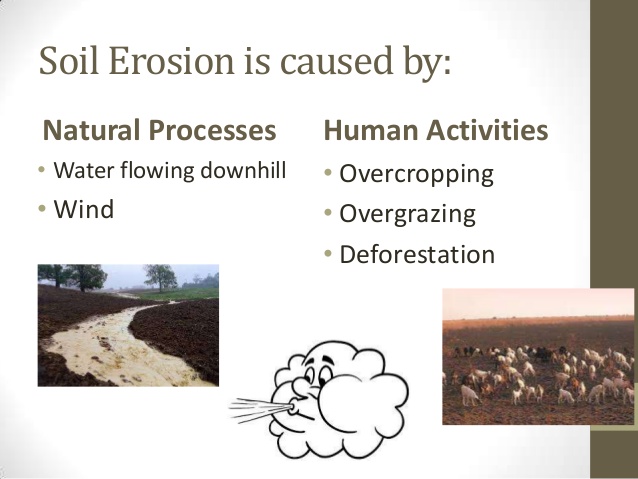
TYPES OF EROSION
1. WATER EROSION: Water erosion is the removal and carrying away of soil particles by rain, running water, melting ice running rapidly over an exposed soil surface.
2. WIND EROSION: This is the blowing away of the soil particles or topsoil by wind. Wind erosion is common in arid or dry land where there is little or no rainfall.

EFFECTS OF SOIL EROSION
1. Reduction in soil quality which results from the loss of the nutrient-rich upper layers of the soil
2. Reduces water-holding capacity of soil.
3. Displacement of people from their homes
4. Destruction of farmlands
5. Collapse of building
6. Damage of soil surface and roads
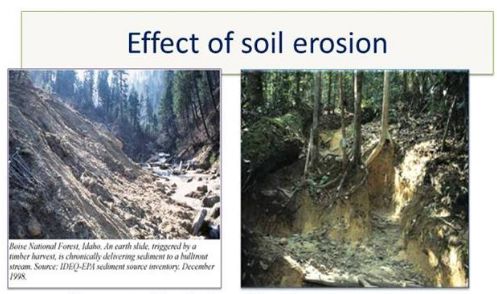
CONTROL OF SOIL EROSION
1. Planting of vegetative cover: Cover crops such as trees, grasses, shrubs can be planted to cover the soil surface. This will reduce the effect of rainfall on the soil. The roots of the vegetative plants help to bind the soil particles together.
2. Avoidance of indiscriminate bush burning: Bush burning exposes the soil to erosion because the vegetative covers are burnt.
3. Avoidance of overgrazing: Land should not be overgrazed to prevent water erosion
4. Mulching: This is the covering of ridges, beds and mounds in the farm with leaves, dry grasses and straw. Mulching reduces the impact of raindrops on the soil and thereby prevents erosion
5. Crop rotation: This is the growing of certain crops in an order and rotating them every planting season in order to maintain soil fertility and also prevent water erosion
6. Ridging across slope: Ridges should be constructed across and not along slopes to reduce the speed of run-off.
7. Application of organic manure: Organic matter prevents loss of water from the soil and makes the soil moist at all time. This makes the particles of the soil heavy for wind to blow away.
8. Irrigation: Artificial application of water to the soil will make the soil moist, thereby binding the soil particles together and preventing the soil particles from being blown away by wind.
9. Planting of leguminous crops
10. Education

EVALUATION
1. Define erosion
2. List four causes of soil erosion
3. State five ways of controlling soil erosion
4. Mention five effects of erosion
LESSON 9
FLOODING
DEFINITION OF FLOODING
Flooding can be defined as an overflowing of water onto land that is normally dry. It also occurs when there is more water on the surface of the land than it can take. This may lead to river overflowing its banks.

Causes of Floods
1.Deforestation: When large areas of forests near the rivers are cleared, the land may be used for settlement, roads and farmland. Less vegetation protects the soil, the soil is quickly lost to rivers and sea. This raises the river bed, so the river overflows its banks easily, then flooding occurs
2. Poor water management: when the dams are poorly constructed or maintained, they can easily collapse and this results in flooding.
3. Population pressure: Because of large amounts of people, more food, wood, etc are needed for consumption, thereby leading to over-cultivation of lands which lead to erosion and increases the risk of flooding.
4. Amount of rainfall: The amount and intensity of rainfall determine the amount of run-off on the land and this will determine the amount of water available for flooding to occur.
5. Closeness to sea or ocean: When the level of water rises above the bank of the sea or river, flooding occurs in areas close to the sea or river
6. Social habit of the people: In areas where people tend to build structures to block drainage system, there may be blockage of water channels and free flow water is hindered which may lead to flooding.
7. Type and condition of the soil: in some areas, the soil is too loose and cannot withstand heavy rainfall and are easily carried away leaving the ground eroded.
EFFECTS OR CONSEQUENCES OF FLOODING ON COMMUNITIES
1. Loss of human life
2. Damage to property
3. Deterioration of health conditions owing to waterborne diseases.
4. Communication links and infrastructure such as power plants, roads and bridges are damaged and disrupted, some economic activities may come to a standstill
5. People are forced to leave their homes and normal life is disrupted
6. Disruption of industry can lead to loss of livelihood.
7. Damage to infrastructure also causes long-term impacts, such as disruptions to supplies of clean water, wastewater treatment, electricity, transport, communication, education and health care.
8. Reduction in purchasing power and loss of land value in the floodplains can leave communities economically vulnerable.
9. Floods can also traumatise victims and their families for long periods of time.

EFFECTS OF FLOODING ON FARMLAND
1. Widespread damage to crops and fencing
2. Loss of livestock
3. Waterlogged soils
4. Delay in harvesting are further intensified by transport problems due to flooded roads and damaged infrastructure.
5. Food prices increase due to shortage in supply.
6. Poverty
CONTROL OF FLOODING
1. Construction of dams to take excess water that may lead to flooding
2. Construction of reservoir that will hold excess water which can be used for other purposes
3. Clearing of gutters of waste that can prevent free flow of water
4. Prevention of construction of structures along river and sea banks
5. Having adequate and proper town planning which will bring about construction of adequate drainage system
6. Education
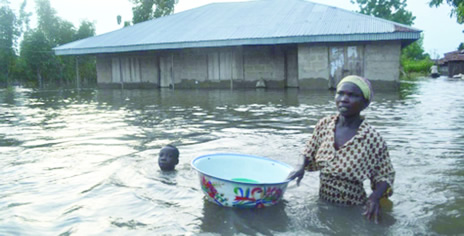

DRAINAGE PATTERNS
Drainage is the process by which water or liquid waste is emptied from an area.

TYPES OF DRAINAGE PATTERNS
1. SURFACE DRAINAGE SYSTEM: This type of drainage system is found in rural areas and it is not designed by qualified engineers. The drainage is exposed and water can easily overflow the drainage and flood the area.
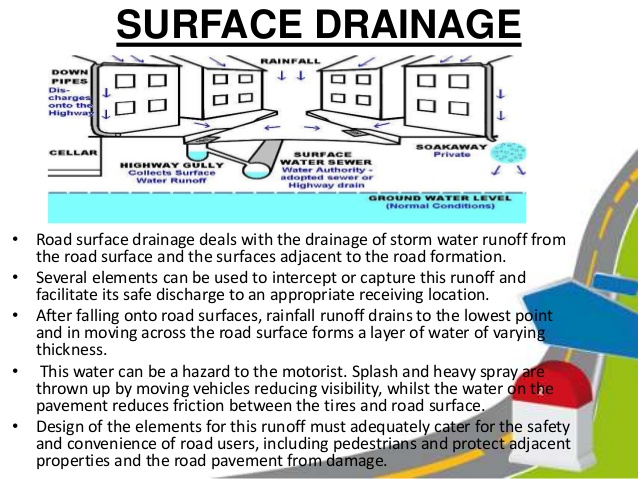
2. SUB-SURFACE DRAINAGE SYSTEM: The sub-surface system is covered with concrete while water flows underground, thereby preventing overflow of the boundaries. It is designed by qualified engineers. This type of drainage is usually found in cities such as Abuja, Lagos, e.t.c.

EVALUATION
1. Explain flooding
2. List five causes of flooding
3. Explain four effects of flooding
4. Mention and explain four activities of man that promote flooding
5. Explain how flooding can be prevented or controlled
6. Explain two types of drainage system
Further Studies 1
Further Studies 2
Reading assignment
Read Soil erosion and flooding
ASSIGNMENT
Read Basic Science made easy for Nigerian Junior Secondary Schools Bk3 by F. I. Kehinde pgs 102-103 and answer the following questions:
i. Define bush burning and deforestation
ii. State three causes of bush burning
iii. State three effects of deforestation
REFERENCES
1. Basic Science Made Easy for Nigerian Junior Secondary Schools Book 3 by F. I. Kehinde
2. Functional Basic Science for Junior Secondary Schools, Book 3 by c. U. Onyirioha et al.
TOPIC: SENSE ORGANS
OBJECTIVE: At the end of the lesson, the students should be able to:
1. Mention the sense organs.
2. State the functions of the eye.
3. Mention the three layers of the eye.
CONTENT:
SENSE ORGANS
These are organs which help us to detect changes in our environment, they are specialized parts of the body that give information about the world around us and help to avoid danger. All the stimuli received by all the sense organs are coordinated and interpreted by the brain and spinal cord.


The sense organs are:
1. The eye for sense of vision.
2. The nose for sense of smell.
3. The ear for sense of sound.
4. The skin for sense of touch, pressure, heat and cold.
5. The tongue for sense of taste.
THE EYE
The eye is made up of three layers.
1. The outer layer which is known as sclera. This layer is responsible for protecting the inner structure of the eye. The sclera transparent part is called the cornea.
2. Choroid: this is the middle coat of the eye, this part is rich in blood and nutrient and is responsible for the supply of food to the cells of the eye.
3. Retina is the innermost part of the eye, this layer is very sensitive to light and contains cells which are called rods and cones. The rods help us to see well at night and are also responsible for seeing objects in black and white,. The cones on the other hand are responsible for colour vision. Images are formed on the retina.

EVALUATION:
Mention the sense organs.
State the functions of the sense organs.
Mention and state the functions of the three layers of the eye.
further studies
http://faculty.washington.edu/chudler/eyetr.html
http://www.sciencekids.co.nz/sciencefac ... /eyes.html
http://www.scientificpsychic.com/workbook/chapter2.htm
practice test
http://www.proprofs.com/quiz-school/sto ... rgans-quiz
http://www.funtrivia.com/playquiz/quiz3 ... f5220.html
LESSON 7
TOPIC: EAR
OBJECTIVE: At the end of the lesson, the students should be able to:
1. State the functions of the ear.
2. Mention the three parts of the ear.
CONTENT:
The ear is the sense organ for learning and balancing in mammals. The ear is made up of three parts.
i. Outer ear
ii. Middle ear
iii. Inner ear

The outer ear consists of the pinna which is made of cartilage and the ear canal. The ear canal leads to the ear drum or tympanis membrane.
The middle ear contains the thypanic membrane, the three ear bones - auditory ossicles, made up of malleus (hammer) incus (anvil) and stapes (stirrup).
The inner ear is a cavity that is filled with the liquid called perilymph. The perilymph surrounds the sensory structure in the ear. The sensory structures are cochlea and the semi-circular canals are concerned with balance. Both the cochlea and semi - circular canals are fitted with endolymph.

EVALUATION:
What are the functions of the ear?
Mention and describe the three layers of the ear.
ASSIGNMENT:
What is the name of the fluid in the ear and what is its function?
further studies
http://kidsresearchexpress-5.blogspot.c ... rgans.html
http://www.factmonster.com/ipka/A0932466.html
http://www.scientificpsychic.com/workbook/chapter2.htm
practice test
http://www.proprofs.com/quiz-school/sto ... rgans-quiz
http://www.funtrivia.com/playquiz/quiz3 ... f5220.html
LESSON 8
TOPIC: ENVIRONMENTAL HAZARDS (SOIL EROSION AND FLOODING)
CONTENT: 1. Definition of Soil Erosion - Causes, Effects and Control of Soil Erosion
2. Definition of Flooding – Causes, Effects of Flooding on Communities and
Farmlands, Control of Flooding and Drainage Patterns
DEFINITION OF SOIL EROSION
Environmental hazard is a term used for any situation or state of events which poses a threat to the surrounding environment and adversely affect plants and animals
SOIL EROSION is the washing away of the soil by heavy rain or wind resulting to the formation of gully and landslides and leaving behind silt on which plants can no longer grow.
Soil erosion can also be defined as the removal of topsoil faster than the soil forming processes can replace it, due to natural, animal, and human activity (overgrazing, over cultivation, forest clearing, mechanized farming, etc.). Soil erosion results in land infertility, leads to desertification and devastating flooding.

CAUSES OF SOIL EROSION
1. Excessive Rain fall: Due to excessive rain fall, top fertile soil is washed away.
2. Human activities: Human activities accelerate disappearance of protective cover of natural vegetation and cause soil erosion.
3. Over grazing: Over grazing leads to the absence of ground-vegetation, causes gradual depletion of soil organisms and soil erosion.
4. Land use: Humans play a major role in soil erosion through their use and abuse of natural resources, for example deforestation, grazing, arable land use, faulty farming systems, high crop intensity, construction, mining, etc.
5. Climate: The two most important climatic factors having a direct effect on erosion are precipitation and wind velocity.
6. Landforms: Slope, gradient, slope length and shape of slope are the important variables of landform that affect erosion processes for all types of soil erosion, e.g., splash, sheet, rill, and gully erosion.
7. Bush burning

TYPES OF EROSION
1. WATER EROSION: Water erosion is the removal and carrying away of soil particles by rain, running water, melting ice running rapidly over an exposed soil surface.
2. WIND EROSION: This is the blowing away of the soil particles or topsoil by wind. Wind erosion is common in arid or dry land where there is little or no rainfall.

EFFECTS OF SOIL EROSION
1. Reduction in soil quality which results from the loss of the nutrient-rich upper layers of the soil
2. Reduces water-holding capacity of soil.
3. Displacement of people from their homes
4. Destruction of farmlands
5. Collapse of building
6. Damage of soil surface and roads

CONTROL OF SOIL EROSION
1. Planting of vegetative cover: Cover crops such as trees, grasses, shrubs can be planted to cover the soil surface. This will reduce the effect of rainfall on the soil. The roots of the vegetative plants help to bind the soil particles together.
2. Avoidance of indiscriminate bush burning: Bush burning exposes the soil to erosion because the vegetative covers are burnt.
3. Avoidance of overgrazing: Land should not be overgrazed to prevent water erosion
4. Mulching: This is the covering of ridges, beds and mounds in the farm with leaves, dry grasses and straw. Mulching reduces the impact of raindrops on the soil and thereby prevents erosion
5. Crop rotation: This is the growing of certain crops in an order and rotating them every planting season in order to maintain soil fertility and also prevent water erosion
6. Ridging across slope: Ridges should be constructed across and not along slopes to reduce the speed of run-off.
7. Application of organic manure: Organic matter prevents loss of water from the soil and makes the soil moist at all time. This makes the particles of the soil heavy for wind to blow away.
8. Irrigation: Artificial application of water to the soil will make the soil moist, thereby binding the soil particles together and preventing the soil particles from being blown away by wind.
9. Planting of leguminous crops
10. Education

EVALUATION
1. Define erosion
2. List four causes of soil erosion
3. State five ways of controlling soil erosion
4. Mention five effects of erosion
LESSON 9
FLOODING
DEFINITION OF FLOODING
Flooding can be defined as an overflowing of water onto land that is normally dry. It also occurs when there is more water on the surface of the land than it can take. This may lead to river overflowing its banks.

Causes of Floods
1.Deforestation: When large areas of forests near the rivers are cleared, the land may be used for settlement, roads and farmland. Less vegetation protects the soil, the soil is quickly lost to rivers and sea. This raises the river bed, so the river overflows its banks easily, then flooding occurs
2. Poor water management: when the dams are poorly constructed or maintained, they can easily collapse and this results in flooding.
3. Population pressure: Because of large amounts of people, more food, wood, etc are needed for consumption, thereby leading to over-cultivation of lands which lead to erosion and increases the risk of flooding.
4. Amount of rainfall: The amount and intensity of rainfall determine the amount of run-off on the land and this will determine the amount of water available for flooding to occur.
5. Closeness to sea or ocean: When the level of water rises above the bank of the sea or river, flooding occurs in areas close to the sea or river
6. Social habit of the people: In areas where people tend to build structures to block drainage system, there may be blockage of water channels and free flow water is hindered which may lead to flooding.
7. Type and condition of the soil: in some areas, the soil is too loose and cannot withstand heavy rainfall and are easily carried away leaving the ground eroded.
EFFECTS OR CONSEQUENCES OF FLOODING ON COMMUNITIES
1. Loss of human life
2. Damage to property
3. Deterioration of health conditions owing to waterborne diseases.
4. Communication links and infrastructure such as power plants, roads and bridges are damaged and disrupted, some economic activities may come to a standstill
5. People are forced to leave their homes and normal life is disrupted
6. Disruption of industry can lead to loss of livelihood.
7. Damage to infrastructure also causes long-term impacts, such as disruptions to supplies of clean water, wastewater treatment, electricity, transport, communication, education and health care.
8. Reduction in purchasing power and loss of land value in the floodplains can leave communities economically vulnerable.
9. Floods can also traumatise victims and their families for long periods of time.

EFFECTS OF FLOODING ON FARMLAND
1. Widespread damage to crops and fencing
2. Loss of livestock
3. Waterlogged soils
4. Delay in harvesting are further intensified by transport problems due to flooded roads and damaged infrastructure.
5. Food prices increase due to shortage in supply.
6. Poverty
CONTROL OF FLOODING
1. Construction of dams to take excess water that may lead to flooding
2. Construction of reservoir that will hold excess water which can be used for other purposes
3. Clearing of gutters of waste that can prevent free flow of water
4. Prevention of construction of structures along river and sea banks
5. Having adequate and proper town planning which will bring about construction of adequate drainage system
6. Education


DRAINAGE PATTERNS
Drainage is the process by which water or liquid waste is emptied from an area.

TYPES OF DRAINAGE PATTERNS
1. SURFACE DRAINAGE SYSTEM: This type of drainage system is found in rural areas and it is not designed by qualified engineers. The drainage is exposed and water can easily overflow the drainage and flood the area.

2. SUB-SURFACE DRAINAGE SYSTEM: The sub-surface system is covered with concrete while water flows underground, thereby preventing overflow of the boundaries. It is designed by qualified engineers. This type of drainage is usually found in cities such as Abuja, Lagos, e.t.c.

EVALUATION
1. Explain flooding
2. List five causes of flooding
3. Explain four effects of flooding
4. Mention and explain four activities of man that promote flooding
5. Explain how flooding can be prevented or controlled
6. Explain two types of drainage system
Further Studies 1
Further Studies 2
Reading assignment
Read Soil erosion and flooding
ASSIGNMENT
Read Basic Science made easy for Nigerian Junior Secondary Schools Bk3 by F. I. Kehinde pgs 102-103 and answer the following questions:
i. Define bush burning and deforestation
ii. State three causes of bush burning
iii. State three effects of deforestation
REFERENCES
1. Basic Science Made Easy for Nigerian Junior Secondary Schools Book 3 by F. I. Kehinde
2. Functional Basic Science for Junior Secondary Schools, Book 3 by c. U. Onyirioha et al.
WEEK 3
LESSON 10
TOPIC: EAR
OBJECTIVE: At the end of the lesson, the students should be able to:
1. Explain hearing mechanism.
2. State the cares of the ear.
CONTENT:
HEARING MECHANISM
Sound waves from outside is collected by the pinna and directed inwards through the ear carnal to the ear drum. The ear drum vibrates opn receiving the sound waves. The vibration is picked up and amplified by the three ear ossicles. The ossicles transmit the vibration through the oval window to the inner ear, causing the inner ear to vibrate especially the cochlea. The stimulation of the cochlea sensory cells stes up impulses which is carried by the auditory nerve to the auditory centre in the brain. The brain interprets the impulses as sound. The path for the sound wave is as follows.
Sound waves → pinna → ear drum → ear ossicles → cochlea → auditory centre in the brain.

CARE OF THE EAR
1. It is not safe to pick the ear with sharp objects so as not to damage the ear drum.
2. You can use hearing aid if there is problem with your ear.
3. See a doctor if you have problems with the ears.
EVALUATION:
Briefly summarize the hearing mechanism.
Mention ways of taking care of the ear.
further studies
http://kidshealth.org/kid/stay_healthy/ ... _care.html
http://www.angelfire.com/mi4/tobincry/mech.html
practice test
http://kidshealth.org/kid/htbw/_bfs_EARquizsource.html
http://kidshealth.org/PageManager.jsp?l ... t_id=20607
LESSON 11
TOPIC: SKIN
OBJECTIVE: At the end of the lesson, the students should be able to:
1. State the function of the skin.
2. Mention important parts of the skin.
CONTENT:
The skin is an important sense organ, it comprises of two layers.
1. Dermis
2. Epidermis
The dermis has different types of sensory cells or nerve ending each of which receives one of the following stimuli: (a) pain (b) heat (c) cold (d) touch and (e) pressure
Sensory cells are distributed all over the skin, these make it possible for the skin to be sensitive in all parts of the body.

IMPORTANT PARTS OF THE SKIN
i. Sweat pore
ii. Sweat gland
iii. Hair follicle
iv. Sebaceous gland or oil gland
v. Sweat duct
vi. Nerve
EVALUATION:
What are the functions of the skin?
Mention important parts of the skin.
further studies
http://kidshealth.org/kid/htbw/skin.html
http://visual.merriam-webster.com/human ... h/skin.php
practice test
http://www.proprofs.com/quiz-school/sto ... rgans-quiz
http://www.funtrivia.com/playquiz/quiz3 ... b3f48.html
http://www.funtrivia.com/newflash/trivia.cfm?qid=311864
http://www.funtrivia.com/playquiz/quiz3 ... b3f48.html
LESSON 12
TOPIC: ENVIRONMENTAL HAZARDS (BUSH BURNING AND DEFORESTATION)
CONTENT: 1. Bush Burning: Practices that Influence Bush Burning; Effects of Bush Burning
Including Economic Consequences; Regulations Against Bush Burning
2 Deforestation: Meaning of Deforestation; Reasons of Deforestation; Effects of
Deforestation; Regulations on Deforestation.
PRACTICES THAT INFLUENCE BUSH BURNING
Bush burning is the clearing of vegetation by setting it on fire. The reason for bush burning may be for social, economic or agricultural purpose. Practices that can influence bush burning include:
1. Building and construction of houses, schools, hospitals, market places, roads, e.t.c.
2. Some culture see bush burning as a way of celebrating festivals
3. Hunting of animals in the bush for commercial purposes
4. The need to remove excessive vegetative cover on farmland before tillage
5. Some farmers set bush on fire because they see it as a way of disinfecting and destroying pests, disease-causing organisms and weed seeds
6. The act of setting bush on fire is to encourage fresh growth of green grass for livestock
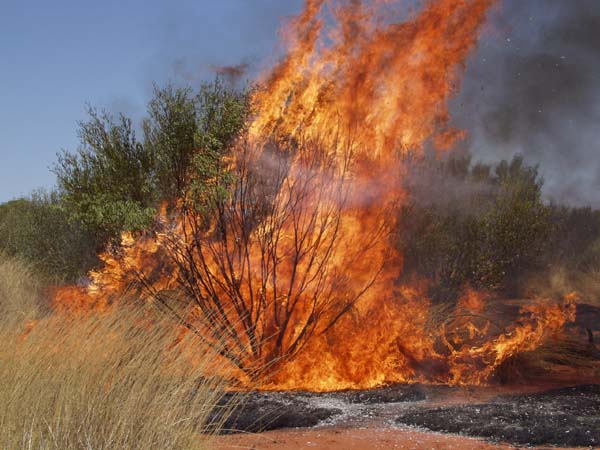
EFFECTS OF BUSH BURNING
1. Bush burning destroys and removes the soil protective and vegetative cover and thereby encourages erosion
2. It exposes the soil to the heat of the soil
3. It leads to destruction of beneficial soil organisms that help to improve soil structure
4. It leads to destruction of wild animals
5. It leads to extinction of animals
6. It causes environmental pollution (Air pollution )
7. It encourages fresh growth of green grasses for livestock
8. It helps in releasing some elements from the burnt plants to the soil, e.g. calcium, potassium and phosphorus
9. It is a quick and cheap way of clearing land
10. It is used to get rid of pests, pathogens and weed seeds
11. It spreads rapidly and cause damage to crops
REGULATIONS AGAINST BUSH BURNING
Laws and regulations against bush burning are made by the government to protect plants and animals. Some of the regulations are:
1. It is an offence to set the bush on fire
2. Hunting is prohibited in forest reserves
There are agencies, divisions and units in the Local Government and ministries in the state responsible for enforcement of laws. These include the following:
1. The Federal Environmental Protection Agency (FEPA )
2. The State Environmental Protection Agency (SEPA )
3. The National Forest Conservation Councils of Nigeria (NAFCON ) which is responsible for matters relating to forests
4. The federal and state ministries of environment
5. Local government that make by-laws to control bush burning
EVALUATION
1. What is bush burning
2. State three practices that influence bush burning
3. List five economical effects of bush burning
4. State three agencies responsible for the control of bush burning
Further Studies
LESSON 13
DEFORESTATION
MEANING OF DEFORESTATION
Deforestation is the removal of a forest or stand of trees where the land is thereafter converted to a non-forest use.
It can also be defined as the continuous removal of forest trees by indiscriminate felling or by bush burning without replacing them. Examples of deforestation include conversion of forestland to farms, ranches or urban use.
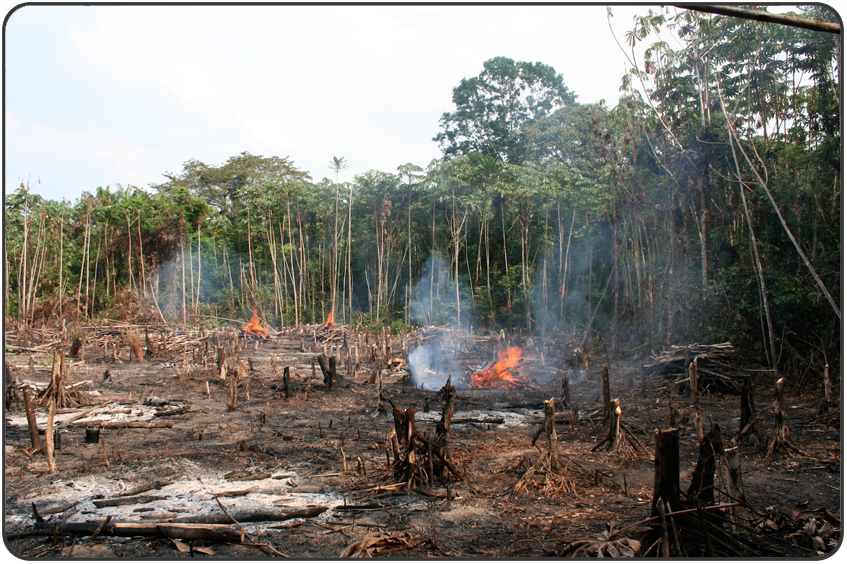
REASONS FOR DEFORESTATION
1. Trees are cut down to be used or sold as fuel (firewood) sometimes in the form of charcoal or timber
2. Farming : Cleared land is used as pasture for livestock and planting of crops
3. War: Deforestation has also been used in war to deprive an enemy of cover for its forces and also vital resources
4. Unfavourable climatic factors
5. Building of houses
6. Natural disaster
7. Industrialization
8. Government policies
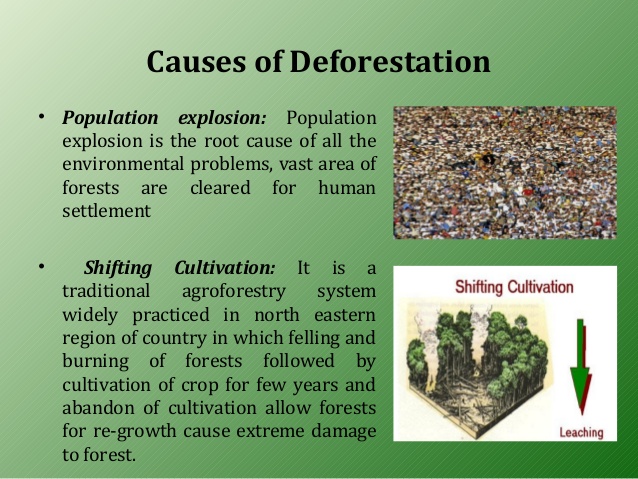
EVALUATION
1. Define deforestation
2. State five reasons for deforestation

EFFECTS OF DEFORESTATION
1. Deforestation leads to desert encroachment
2. It leads to depletion of forest produce which serve as raw materials for industries such as timber, paper industries, etc.
3. It encourages soil erosion as there are no vegetation covers on the soil
4. It leads to loss of organic matter resulting to loss of soil fertility
5. It also increases the rate of leaching of plant nutrient
6. It leads to reduction of wildlife
7. It causes climate change and thereby leads to global warming as well as pollution because carbon (iv) oxide is allowed to accumulate in the cloud
8. It causes extinction of wildlife
9. It causes desertification
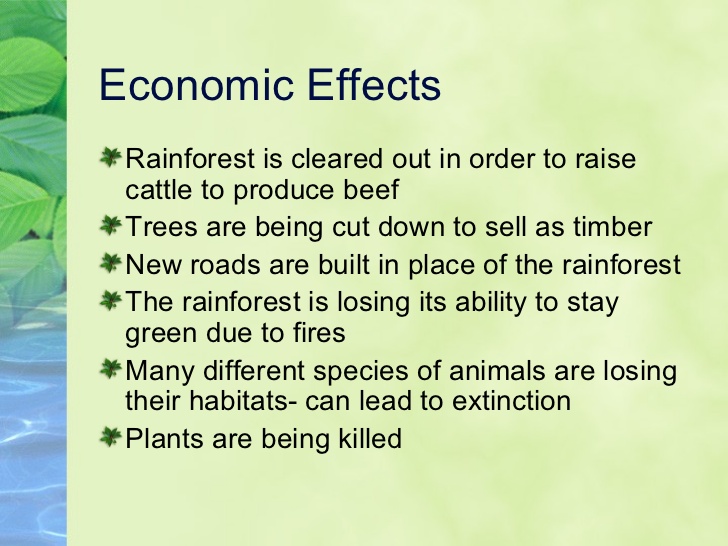
CONTROL OF DEFORESTATION
1. Forest Management
2. Improved and sustainable farming practices
3. Reforestation
4. Forest Plantation
5. Monitoring Deforestation
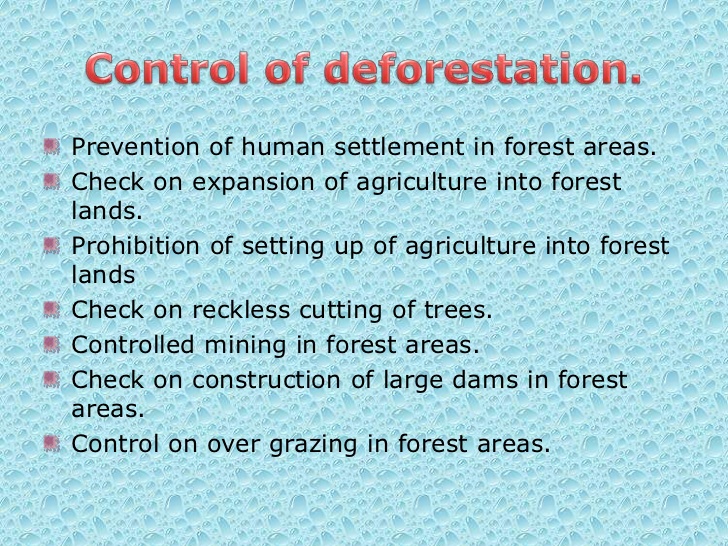
REGULATIONS ON DEFORESTATION
International organizations including the United Nations and the World Bank have begun to develop programs aimed at curbing deforestation. The blanket term Reducing Emissions from Deforestation and Forest Degradation (REDD) describes these sorts of programs, which use direct monetary or other incentives to encourage developing countries to limit and/or roll back deforestation.
Some of the regulations made by the Nigeria government to prevent people from engaging in activities leading to deforestation are:
1. Regulation banning indiscriminate cutting of timber trees
2. Regulation banning farming in forest reserve
3. Regulation prohibiting bush burning
4. Regulation encouraging people to plant trees
5. Regulation that people should obtain licence to secure permission to enable them cut down trees for human needs
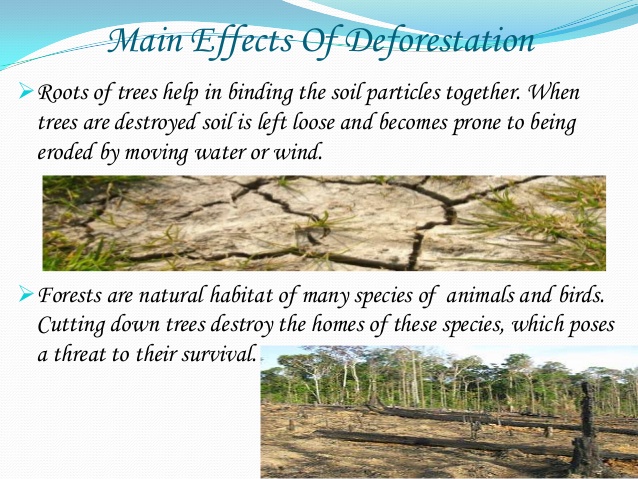
EVALUATION
1. State three regulations by the government to prevent deforestation
2. State five effects of deforestation on the environment
3. State two ways of controlling deforestation
READING ASSIGNMENT
-Write three ways of controlling bush burning
Basic Science Made Easy for Nigerian Junior Secondary Schools Book 3 by F. I. Kehinde
Functional Basic Science for Junior Secondary Schools, Book 3 by c. U. Onyirioha et al.
ASSIGNMENT
Read and discuss ozone layer depletion and its effects
REFERENCES
Basic Science Made Easy for Nigerian Junior Secondary Schools Book 3 by F. I. Kehinde
Functional Basic Science for Junior Secondary Schools, Book 3 by c. U. Onyirioha et al.
TOPIC: EAR
OBJECTIVE: At the end of the lesson, the students should be able to:
1. Explain hearing mechanism.
2. State the cares of the ear.
CONTENT:
HEARING MECHANISM
Sound waves from outside is collected by the pinna and directed inwards through the ear carnal to the ear drum. The ear drum vibrates opn receiving the sound waves. The vibration is picked up and amplified by the three ear ossicles. The ossicles transmit the vibration through the oval window to the inner ear, causing the inner ear to vibrate especially the cochlea. The stimulation of the cochlea sensory cells stes up impulses which is carried by the auditory nerve to the auditory centre in the brain. The brain interprets the impulses as sound. The path for the sound wave is as follows.
Sound waves → pinna → ear drum → ear ossicles → cochlea → auditory centre in the brain.

CARE OF THE EAR
1. It is not safe to pick the ear with sharp objects so as not to damage the ear drum.
2. You can use hearing aid if there is problem with your ear.
3. See a doctor if you have problems with the ears.
EVALUATION:
Briefly summarize the hearing mechanism.
Mention ways of taking care of the ear.
further studies
http://kidshealth.org/kid/stay_healthy/ ... _care.html
http://www.angelfire.com/mi4/tobincry/mech.html
practice test
http://kidshealth.org/kid/htbw/_bfs_EARquizsource.html
http://kidshealth.org/PageManager.jsp?l ... t_id=20607
LESSON 11
TOPIC: SKIN
OBJECTIVE: At the end of the lesson, the students should be able to:
1. State the function of the skin.
2. Mention important parts of the skin.
CONTENT:
The skin is an important sense organ, it comprises of two layers.
1. Dermis
2. Epidermis
The dermis has different types of sensory cells or nerve ending each of which receives one of the following stimuli: (a) pain (b) heat (c) cold (d) touch and (e) pressure
Sensory cells are distributed all over the skin, these make it possible for the skin to be sensitive in all parts of the body.

IMPORTANT PARTS OF THE SKIN
i. Sweat pore
ii. Sweat gland
iii. Hair follicle
iv. Sebaceous gland or oil gland
v. Sweat duct
vi. Nerve
EVALUATION:
What are the functions of the skin?
Mention important parts of the skin.
further studies
http://kidshealth.org/kid/htbw/skin.html
http://visual.merriam-webster.com/human ... h/skin.php
practice test
http://www.proprofs.com/quiz-school/sto ... rgans-quiz
http://www.funtrivia.com/playquiz/quiz3 ... b3f48.html
http://www.funtrivia.com/newflash/trivia.cfm?qid=311864
http://www.funtrivia.com/playquiz/quiz3 ... b3f48.html
LESSON 12
TOPIC: ENVIRONMENTAL HAZARDS (BUSH BURNING AND DEFORESTATION)
CONTENT: 1. Bush Burning: Practices that Influence Bush Burning; Effects of Bush Burning
Including Economic Consequences; Regulations Against Bush Burning
2 Deforestation: Meaning of Deforestation; Reasons of Deforestation; Effects of
Deforestation; Regulations on Deforestation.
PRACTICES THAT INFLUENCE BUSH BURNING
Bush burning is the clearing of vegetation by setting it on fire. The reason for bush burning may be for social, economic or agricultural purpose. Practices that can influence bush burning include:
1. Building and construction of houses, schools, hospitals, market places, roads, e.t.c.
2. Some culture see bush burning as a way of celebrating festivals
3. Hunting of animals in the bush for commercial purposes
4. The need to remove excessive vegetative cover on farmland before tillage
5. Some farmers set bush on fire because they see it as a way of disinfecting and destroying pests, disease-causing organisms and weed seeds
6. The act of setting bush on fire is to encourage fresh growth of green grass for livestock

EFFECTS OF BUSH BURNING
1. Bush burning destroys and removes the soil protective and vegetative cover and thereby encourages erosion
2. It exposes the soil to the heat of the soil
3. It leads to destruction of beneficial soil organisms that help to improve soil structure
4. It leads to destruction of wild animals
5. It leads to extinction of animals
6. It causes environmental pollution (Air pollution )
7. It encourages fresh growth of green grasses for livestock
8. It helps in releasing some elements from the burnt plants to the soil, e.g. calcium, potassium and phosphorus
9. It is a quick and cheap way of clearing land
10. It is used to get rid of pests, pathogens and weed seeds
11. It spreads rapidly and cause damage to crops
REGULATIONS AGAINST BUSH BURNING
Laws and regulations against bush burning are made by the government to protect plants and animals. Some of the regulations are:
1. It is an offence to set the bush on fire
2. Hunting is prohibited in forest reserves
There are agencies, divisions and units in the Local Government and ministries in the state responsible for enforcement of laws. These include the following:
1. The Federal Environmental Protection Agency (FEPA )
2. The State Environmental Protection Agency (SEPA )
3. The National Forest Conservation Councils of Nigeria (NAFCON ) which is responsible for matters relating to forests
4. The federal and state ministries of environment
5. Local government that make by-laws to control bush burning
EVALUATION
1. What is bush burning
2. State three practices that influence bush burning
3. List five economical effects of bush burning
4. State three agencies responsible for the control of bush burning
Further Studies
LESSON 13
DEFORESTATION
MEANING OF DEFORESTATION
Deforestation is the removal of a forest or stand of trees where the land is thereafter converted to a non-forest use.
It can also be defined as the continuous removal of forest trees by indiscriminate felling or by bush burning without replacing them. Examples of deforestation include conversion of forestland to farms, ranches or urban use.

REASONS FOR DEFORESTATION
1. Trees are cut down to be used or sold as fuel (firewood) sometimes in the form of charcoal or timber
2. Farming : Cleared land is used as pasture for livestock and planting of crops
3. War: Deforestation has also been used in war to deprive an enemy of cover for its forces and also vital resources
4. Unfavourable climatic factors
5. Building of houses
6. Natural disaster
7. Industrialization
8. Government policies

EVALUATION
1. Define deforestation
2. State five reasons for deforestation

EFFECTS OF DEFORESTATION
1. Deforestation leads to desert encroachment
2. It leads to depletion of forest produce which serve as raw materials for industries such as timber, paper industries, etc.
3. It encourages soil erosion as there are no vegetation covers on the soil
4. It leads to loss of organic matter resulting to loss of soil fertility
5. It also increases the rate of leaching of plant nutrient
6. It leads to reduction of wildlife
7. It causes climate change and thereby leads to global warming as well as pollution because carbon (iv) oxide is allowed to accumulate in the cloud
8. It causes extinction of wildlife
9. It causes desertification

CONTROL OF DEFORESTATION
1. Forest Management
2. Improved and sustainable farming practices
3. Reforestation
4. Forest Plantation
5. Monitoring Deforestation

REGULATIONS ON DEFORESTATION
International organizations including the United Nations and the World Bank have begun to develop programs aimed at curbing deforestation. The blanket term Reducing Emissions from Deforestation and Forest Degradation (REDD) describes these sorts of programs, which use direct monetary or other incentives to encourage developing countries to limit and/or roll back deforestation.
Some of the regulations made by the Nigeria government to prevent people from engaging in activities leading to deforestation are:
1. Regulation banning indiscriminate cutting of timber trees
2. Regulation banning farming in forest reserve
3. Regulation prohibiting bush burning
4. Regulation encouraging people to plant trees
5. Regulation that people should obtain licence to secure permission to enable them cut down trees for human needs

EVALUATION
1. State three regulations by the government to prevent deforestation
2. State five effects of deforestation on the environment
3. State two ways of controlling deforestation
READING ASSIGNMENT
-Write three ways of controlling bush burning
Basic Science Made Easy for Nigerian Junior Secondary Schools Book 3 by F. I. Kehinde
Functional Basic Science for Junior Secondary Schools, Book 3 by c. U. Onyirioha et al.
ASSIGNMENT
Read and discuss ozone layer depletion and its effects
REFERENCES
Basic Science Made Easy for Nigerian Junior Secondary Schools Book 3 by F. I. Kehinde
Functional Basic Science for Junior Secondary Schools, Book 3 by c. U. Onyirioha et al.
WEEK 4
LESSON 14
TOPIC: TONGUE AND NOSE
OBJECTIVE: At the end of the lesson, the students should be able to:
1. State the function of the tongue.
2. Mention the four different taste regions of the tongue.
3. State the functions of the nose.
CONTENT:
TONGUE
The receptors for taste called taste buds are situated chiefly in the tongue but they are also located in the roof of the mouth. They are able to detect four basic tastes:
(1) salty (2) sweet (3) bitter (4) sour
The sense of taste functions in coordination with the sense of smell. The number of taste buds varies substantially from individual to individual but generally women have greater numbers of taste buds than man.
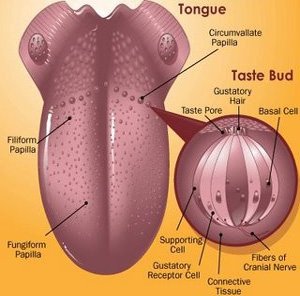
NOSE
The nose is the organ responsible for the sense of smell. The cavity of the nose is lined with mucous membranes that have smell receptors connected to the olfactory nerve. The smells themselves consists vapors of various substances. The smell receptors interact with the molecules of these vapors and transmit the sensation to the brain.
The smell receptors are sensitive to seven types of sensations that can be characterized as (1) camphor (2) musk (3) flower (4) mint (5) ether (6) acrid (7) putrid. The sense of smell is sometimes temporarily lost when a person has cold. Dogs have a sense of smell that is many more sensitive than man's.
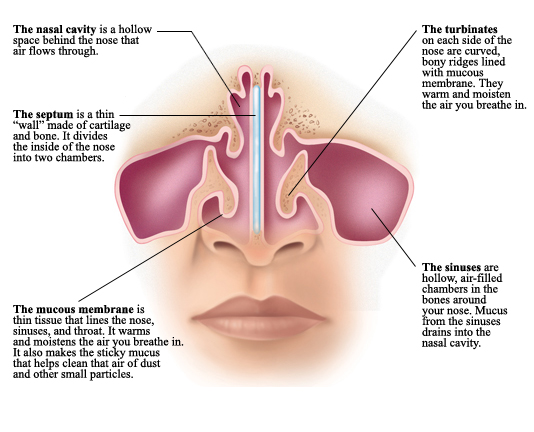
EVALUATION:
i. State the functions of the tongue.
ii. Mention the taste buds.
iii. State the function of the nose.
further studies
http://www.cyh.com/HealthTopics/HealthT ... 52&id=1832
http://kidshealth.org/kid/htbw/tongue.html
http://kidshealth.org/kid/talk/qa/taste_buds.html
practice test
http://www.quibblo.com/quiz/Umsdgx/Resp ... ystem-Quiz
LESSON 15
TOPIC: THE ENDOCRINE SYSTEM
OBJECTIVE: At the end of the lesson, the students should be able to:
1. Describe endocrine system.
2. Define hormones.
CONTENT:
Endocrine system simple describes the functions of hormones in human body.
Hormones are organic compounds or biochemical substances produced in minute quantities in one part of the body and transported to the site of action where they exact specific effect to control body metabolism. Hormones are sometimes called chemical messengers or organic substances are produced by ductless glands called endocrine glands. Their secretions diffuse directly in the blood which carries them to all parts of the body including the organs and tissues they affect to control.
( 1) growth (2) metabolism (3) sexual reproduction (4) development (5) response to causes and other body processes.

Endocrinology: is the study of the endocrine glands, the hormonal substances produced by these glands, their physiological effects and disorders and diseases that results from their malfunction.
https://drive.google.com/file/d/0Bz3Mh6 ... sp=sharing
EVALUATION:
Describe endocrine system.
What is the function of endocrine system?
Define hormone.
further studies
http://kidshealth.org/teen/your_body/bo ... crine.html
http://kidshealth.org/kid/htbw/endocrine.html
practice test
http://www.proprofs.com/quiz-school/sto ... iz-anatomy
LESSON 16
TOPIC: ENVIRONMENTAL HAZARDS (DESERTIFICATION AND DEPLETION OF THE OZONE LAYER)
CONTENT: 1. Desertification: Definition of desertification or desert encroachment
Geographical areas; Causes of desertification; Control measures of
desertification
2. Depletion of Ozone Layer and Its Effects; Description of the ozone layer
and its location in the atmosphere; Importance of the ozone layer; Effects
of depletion of ozone layer; Control measures of ozone layer depletion
DESERTIFICATION
Definition of Desertification or Desert Encroachment
Desertification is the degradation of land in any dry land. It is caused by a variety of factors, such as climate change and human activities. Desertification is a significant global ecological and environmental problem.
It can also be defined as a process of land degradation which occur mainly in arid regions or semi-arid regions where rainfall is unreliable which can be compounded by different human activities that lead to mismanagement of the environment

GEOGRAPHICAL AREAS
Dry lands occupy approximately 40–41% of earth’s land area and are home to more than 2 billion people. It has been estimated that some 10–20% of dry lands are already degraded, the total area affected by desertification being between 6 and 12 million square kilometres, about 1–6% of the inhabitants of dry lands live in desertified areas, and that a billion people are under threat from further desertification.
The Sahara is currently expanding at a rate of 48 kilometers per year.
Some geographical areas are more prone to becoming deserts than others. Geographical areas where rainfall is not heavy and regular are prone to desertification. Northern states of Nigeria such as Sokoto, Kano, Katsina, Jigawa and Borno have low and irregular rainfall. These states are threatened by desertification.
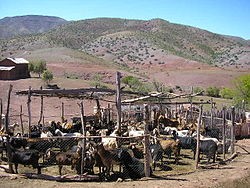
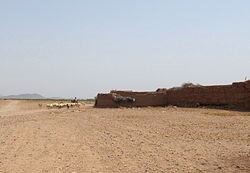
CAUSES OF DESERTIFICATION
1. Over cultivation of desert land: The most common cause of desertification is the over cultivation of desert lands. Over cultivation causes the nutrients in the soil to be depleted faster than they are restored
2. Overgrazing of dry lands is one of the primary causes of desertification. Overgrazing removes vegetation causing erosion and loss of topsoil.
3. Poverty;
At least 90% of the inhabitants of dry lands live in developing nations where they also suffer from poor economic and social conditions. This situation resulted to land degradation because of the reduction in productivity and the difficulty of access to resources and opportunities
4. Deforestation;
Destruction of plants in dry regions is causing desertification to occur. People are cutting down trees to use them as a source of fuel. Once all these trees are cut down there is nothing to protect the soil. Therefore, it turns to dust and is blown away by the wind.
5. Incorrect Irrigation in Arid regions;
Incorrect irrigation is commonly used in poorer areas. Farmers are using canal irrigation and other poor techniques because of the lack of water. This type of irrigation causes a build up of salt in the soil.
6. Bush burning
7. Erosion
8. Absence of rainfall for a long time
9. Climate change
EFFECTS OF DESERTIFICATION
1. Soil becomes less usable;
The soil can be blown away by wind or washed away by rain. Nutrients in the soil can be removed by wind or water. Salt can build up in the soil which makes it harder for plant growth
2. Vegetation is damaged;
Loosened soil may bury plants or leave their roots exposed. Also, when overgrazing occurs, plant species may be lost.
3. Famine;
Places that have war and poverty are most likely to have famine. Drought and poor land management contribute to famine.
4. Food Loss;
The soil is not suitable for growing food; therefore the amount of food being made will decline. If the population is growing, this will cause economic problems and starvation.
5. Desertification can cause flooding, poor water quality, dust storms, and pollution. All of these effects can hurt people living near an affected region. (The Facts of Desertification and United Nations Convention to Combat Desertification, 2000)
6. Death;
People die of starvation and cattle die of starvation
7. Migration;
Desertification often causes rural lands to become unable to support the same sized populations that previously lived there. This results in mass migrations out of rural areas and into urban areas, particularly in Africa. These migrations into the cities, often cause large numbers of unemployed people who end up living in slums
8. Desertification is recognized as a major threat to biodiversity
9. It leads to extreme poverty


CONTROL MEASURES OF DESERTIFICATION
1. Prevention of overgrazing
2. Afforestation and reforestation should be encouraged
3. Improved and sustainable agricultural practices
4. Desertification programs
5. Development of biodiversity action plans to counter its effects, particularly in relation to the protection of endangered flora and fauna
6. Educating the local population about the dangers of deforestation and sometimes employ them to grow seedlings, which they transfer to severely deforested areas during the rainy season
7. To make unified plans, adapt measures to local conditions, implement the plans in a step-by-step manner, and combine regional prevention and control with key area prevention and control
8. To give priority to prevention, combine prevention with control and adopt integrated approaches in rehabilitating desertified land
9. To combine protection and restoration of vegetation with rational use of natural resources
10. To follow the law of ecology and rely on advancement of science and technology
11. To combine efforts to improve ecological environment with efforts to help farmers and herdsmen to free themselves from poverty and become prosperous
12. To combine government support with local self-reliance, combine organization by the government with participation by people from all walks of life, and encourage units and individuals to contract for prevention and control of desertification
13. To protect the legitimate rights and interests of people engaged in prevention and control of desertification.
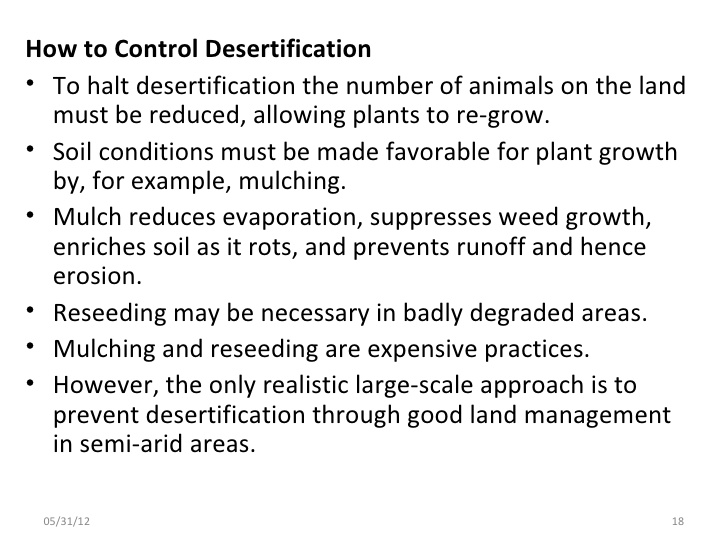
EVALUATION
1. Define desertification
2. List five causes of desertification
3. List four effects of desertification
4. State five control measures of desertification
https://youtu.be/gRJBuM7qjQ0
https://youtu.be/w9RxnuBiFbg
Further Studies 1
Further Studies 2
Further Studies 3
Further Studies 4
Practice Test 1
Practice Test 2
LESSON 17
DEPLETION OF OZONE LAYER AND ITS EFFECTS
Description of the Ozone Layer and its Location in the Atmosphere
The earth’s atmosphere is divided into three layers namely: troposphere, stratosphere and ionosphere. Ionosphere is further divided into mesosphere and thermosphere.
The ozone layer is located in the stratosphere. Ozone forms a layer of the upper atmosphere, where it acts as a shield that prevents most of the ultraviolet radiation in sunlight from reaching earth’s surface. In recent years, reports from atmosphere research satellites have shown that the ozone layer is vanishing or depleting than it can be regenerated naturally. This has cause a lot of concern among those who know the effects of what is happening to ozone layer.
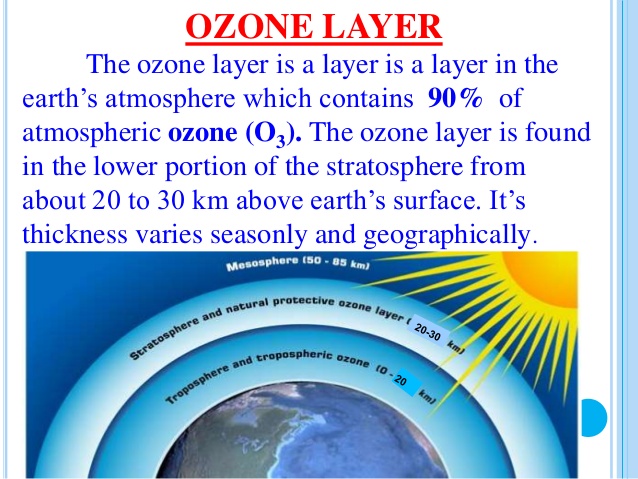
IMPORTANCE OF THE OZONE LAYER
The ozone layer forms a protective shield against some kinds of radiation produced by the sun.
The radiation is the ultraviolet rays emitted by the sun. The rays pass through the layers of the atmosphere and they are absorbed by the ozone layer, thereby protecting human beings and other living organisms from harmful ultraviolet rays.
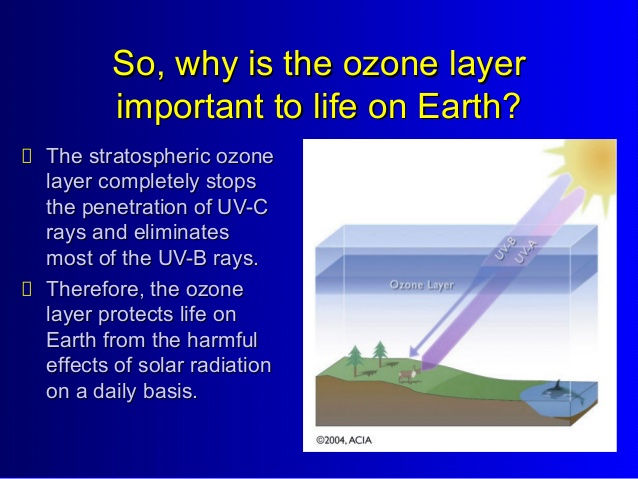
CAUSES OF OZONE LAYER DEPLETION
The major cause of ozone layer depletion is the accumulation of a chemical called Chlorofluorocarbon (CFC ) which is a chemical used for refrigeration, as propellant in aerosol and for other manufacturing processes. The ways in which CFC destroys the ozone layer are as follows:
1. Chlorine from CFC reacts with ozone, chlorine monoxide and oxygen are formed
2. Two molecules of chlorine monoxide react to form chlorine peroxide
3. Sunlight causes chlorine peroxide to break it down into oxygen and free chlorine atoms
4. The chlorine atoms can then bring the cycle again and again

EFFECTS OF DEPLETION OF OZONE LAYER
1. It leads to appearance of various forms of cancer
2. Severe sun burns
3. It leads to the development of cataracts leading to clouding of eye lens and blurred vision
4. The skin ageing more rapidly
5. It causes lowered resistance to infectious diseases
6. Killing of useful micro-organisms
7. It affects photosynthesis resulting in lower crop yield
8. It causes global warming
9. It causes green house effect
10. It makes polar ice melt in cold regions of the world leading to flooding
11. It increases sea level which results in flooding


CONTROL MEASURES OF OZONE LAYER DEPLETION
1. There should be ban on chemicals that cause depletion of ozone layer
2. Production of chlorofluorocarbon should be stopped
3. Chemicals that are environmentally friendly should be produced to replace substances or chemicals that cause ozone layer depletion
4. Indiscriminate burning of materials that can cause global warming and green house effect should be stopped.
5. Reduce bush burning
6. Control discharges of industrial effluents
7. Regulation on use of chlorofluorocarbon
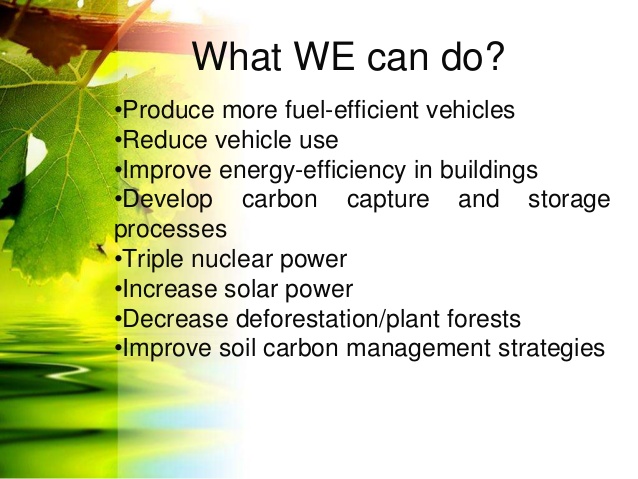
https://youtu.be/PXV6ppONgUk
EVALUATION
1. What is the full meaning of CFC
2. Where is the ozone layer located in the atmosphere
3. Explain the importance of the ozone layer
4. List three causes of the ozone layer
5. State five effects of the ozone layer depletion
6. State five ways of reducing ozone layer depletion
ASSIGNMENT
1. Draw the layers in the atmosphere
2. Read about drug abuse III. Basic Science made easy for Nigerian Junior Secondary Schools Bk3 by F. I. Kehinde pgs 26-29.
Further Studies 1
Further Studies 2
Practice Test
TOPIC: TONGUE AND NOSE
OBJECTIVE: At the end of the lesson, the students should be able to:
1. State the function of the tongue.
2. Mention the four different taste regions of the tongue.
3. State the functions of the nose.
CONTENT:
TONGUE
The receptors for taste called taste buds are situated chiefly in the tongue but they are also located in the roof of the mouth. They are able to detect four basic tastes:
(1) salty (2) sweet (3) bitter (4) sour
The sense of taste functions in coordination with the sense of smell. The number of taste buds varies substantially from individual to individual but generally women have greater numbers of taste buds than man.

NOSE
The nose is the organ responsible for the sense of smell. The cavity of the nose is lined with mucous membranes that have smell receptors connected to the olfactory nerve. The smells themselves consists vapors of various substances. The smell receptors interact with the molecules of these vapors and transmit the sensation to the brain.
The smell receptors are sensitive to seven types of sensations that can be characterized as (1) camphor (2) musk (3) flower (4) mint (5) ether (6) acrid (7) putrid. The sense of smell is sometimes temporarily lost when a person has cold. Dogs have a sense of smell that is many more sensitive than man's.

EVALUATION:
i. State the functions of the tongue.
ii. Mention the taste buds.
iii. State the function of the nose.
further studies
http://www.cyh.com/HealthTopics/HealthT ... 52&id=1832
http://kidshealth.org/kid/htbw/tongue.html
http://kidshealth.org/kid/talk/qa/taste_buds.html
practice test
http://www.quibblo.com/quiz/Umsdgx/Resp ... ystem-Quiz
LESSON 15
TOPIC: THE ENDOCRINE SYSTEM
OBJECTIVE: At the end of the lesson, the students should be able to:
1. Describe endocrine system.
2. Define hormones.
CONTENT:
Endocrine system simple describes the functions of hormones in human body.
Hormones are organic compounds or biochemical substances produced in minute quantities in one part of the body and transported to the site of action where they exact specific effect to control body metabolism. Hormones are sometimes called chemical messengers or organic substances are produced by ductless glands called endocrine glands. Their secretions diffuse directly in the blood which carries them to all parts of the body including the organs and tissues they affect to control.
( 1) growth (2) metabolism (3) sexual reproduction (4) development (5) response to causes and other body processes.

Endocrinology: is the study of the endocrine glands, the hormonal substances produced by these glands, their physiological effects and disorders and diseases that results from their malfunction.
https://drive.google.com/file/d/0Bz3Mh6 ... sp=sharing
EVALUATION:
Describe endocrine system.
What is the function of endocrine system?
Define hormone.
further studies
http://kidshealth.org/teen/your_body/bo ... crine.html
http://kidshealth.org/kid/htbw/endocrine.html
practice test
http://www.proprofs.com/quiz-school/sto ... iz-anatomy
LESSON 16
TOPIC: ENVIRONMENTAL HAZARDS (DESERTIFICATION AND DEPLETION OF THE OZONE LAYER)
CONTENT: 1. Desertification: Definition of desertification or desert encroachment
Geographical areas; Causes of desertification; Control measures of
desertification
2. Depletion of Ozone Layer and Its Effects; Description of the ozone layer
and its location in the atmosphere; Importance of the ozone layer; Effects
of depletion of ozone layer; Control measures of ozone layer depletion
DESERTIFICATION
Definition of Desertification or Desert Encroachment
Desertification is the degradation of land in any dry land. It is caused by a variety of factors, such as climate change and human activities. Desertification is a significant global ecological and environmental problem.
It can also be defined as a process of land degradation which occur mainly in arid regions or semi-arid regions where rainfall is unreliable which can be compounded by different human activities that lead to mismanagement of the environment

GEOGRAPHICAL AREAS
Dry lands occupy approximately 40–41% of earth’s land area and are home to more than 2 billion people. It has been estimated that some 10–20% of dry lands are already degraded, the total area affected by desertification being between 6 and 12 million square kilometres, about 1–6% of the inhabitants of dry lands live in desertified areas, and that a billion people are under threat from further desertification.
The Sahara is currently expanding at a rate of 48 kilometers per year.
Some geographical areas are more prone to becoming deserts than others. Geographical areas where rainfall is not heavy and regular are prone to desertification. Northern states of Nigeria such as Sokoto, Kano, Katsina, Jigawa and Borno have low and irregular rainfall. These states are threatened by desertification.


CAUSES OF DESERTIFICATION
1. Over cultivation of desert land: The most common cause of desertification is the over cultivation of desert lands. Over cultivation causes the nutrients in the soil to be depleted faster than they are restored
2. Overgrazing of dry lands is one of the primary causes of desertification. Overgrazing removes vegetation causing erosion and loss of topsoil.
3. Poverty;
At least 90% of the inhabitants of dry lands live in developing nations where they also suffer from poor economic and social conditions. This situation resulted to land degradation because of the reduction in productivity and the difficulty of access to resources and opportunities
4. Deforestation;
Destruction of plants in dry regions is causing desertification to occur. People are cutting down trees to use them as a source of fuel. Once all these trees are cut down there is nothing to protect the soil. Therefore, it turns to dust and is blown away by the wind.
5. Incorrect Irrigation in Arid regions;
Incorrect irrigation is commonly used in poorer areas. Farmers are using canal irrigation and other poor techniques because of the lack of water. This type of irrigation causes a build up of salt in the soil.
6. Bush burning
7. Erosion
8. Absence of rainfall for a long time
9. Climate change
EFFECTS OF DESERTIFICATION
1. Soil becomes less usable;
The soil can be blown away by wind or washed away by rain. Nutrients in the soil can be removed by wind or water. Salt can build up in the soil which makes it harder for plant growth
2. Vegetation is damaged;
Loosened soil may bury plants or leave their roots exposed. Also, when overgrazing occurs, plant species may be lost.
3. Famine;
Places that have war and poverty are most likely to have famine. Drought and poor land management contribute to famine.
4. Food Loss;
The soil is not suitable for growing food; therefore the amount of food being made will decline. If the population is growing, this will cause economic problems and starvation.
5. Desertification can cause flooding, poor water quality, dust storms, and pollution. All of these effects can hurt people living near an affected region. (The Facts of Desertification and United Nations Convention to Combat Desertification, 2000)
6. Death;
People die of starvation and cattle die of starvation
7. Migration;
Desertification often causes rural lands to become unable to support the same sized populations that previously lived there. This results in mass migrations out of rural areas and into urban areas, particularly in Africa. These migrations into the cities, often cause large numbers of unemployed people who end up living in slums
8. Desertification is recognized as a major threat to biodiversity
9. It leads to extreme poverty


CONTROL MEASURES OF DESERTIFICATION
1. Prevention of overgrazing
2. Afforestation and reforestation should be encouraged
3. Improved and sustainable agricultural practices
4. Desertification programs
5. Development of biodiversity action plans to counter its effects, particularly in relation to the protection of endangered flora and fauna
6. Educating the local population about the dangers of deforestation and sometimes employ them to grow seedlings, which they transfer to severely deforested areas during the rainy season
7. To make unified plans, adapt measures to local conditions, implement the plans in a step-by-step manner, and combine regional prevention and control with key area prevention and control
8. To give priority to prevention, combine prevention with control and adopt integrated approaches in rehabilitating desertified land
9. To combine protection and restoration of vegetation with rational use of natural resources
10. To follow the law of ecology and rely on advancement of science and technology
11. To combine efforts to improve ecological environment with efforts to help farmers and herdsmen to free themselves from poverty and become prosperous
12. To combine government support with local self-reliance, combine organization by the government with participation by people from all walks of life, and encourage units and individuals to contract for prevention and control of desertification
13. To protect the legitimate rights and interests of people engaged in prevention and control of desertification.

EVALUATION
1. Define desertification
2. List five causes of desertification
3. List four effects of desertification
4. State five control measures of desertification
https://youtu.be/gRJBuM7qjQ0
https://youtu.be/w9RxnuBiFbg
Further Studies 1
Further Studies 2
Further Studies 3
Further Studies 4
Practice Test 1
Practice Test 2
LESSON 17
DEPLETION OF OZONE LAYER AND ITS EFFECTS
Description of the Ozone Layer and its Location in the Atmosphere
The earth’s atmosphere is divided into three layers namely: troposphere, stratosphere and ionosphere. Ionosphere is further divided into mesosphere and thermosphere.
The ozone layer is located in the stratosphere. Ozone forms a layer of the upper atmosphere, where it acts as a shield that prevents most of the ultraviolet radiation in sunlight from reaching earth’s surface. In recent years, reports from atmosphere research satellites have shown that the ozone layer is vanishing or depleting than it can be regenerated naturally. This has cause a lot of concern among those who know the effects of what is happening to ozone layer.

IMPORTANCE OF THE OZONE LAYER
The ozone layer forms a protective shield against some kinds of radiation produced by the sun.
The radiation is the ultraviolet rays emitted by the sun. The rays pass through the layers of the atmosphere and they are absorbed by the ozone layer, thereby protecting human beings and other living organisms from harmful ultraviolet rays.

CAUSES OF OZONE LAYER DEPLETION
The major cause of ozone layer depletion is the accumulation of a chemical called Chlorofluorocarbon (CFC ) which is a chemical used for refrigeration, as propellant in aerosol and for other manufacturing processes. The ways in which CFC destroys the ozone layer are as follows:
1. Chlorine from CFC reacts with ozone, chlorine monoxide and oxygen are formed
2. Two molecules of chlorine monoxide react to form chlorine peroxide
3. Sunlight causes chlorine peroxide to break it down into oxygen and free chlorine atoms
4. The chlorine atoms can then bring the cycle again and again

EFFECTS OF DEPLETION OF OZONE LAYER
1. It leads to appearance of various forms of cancer
2. Severe sun burns
3. It leads to the development of cataracts leading to clouding of eye lens and blurred vision
4. The skin ageing more rapidly
5. It causes lowered resistance to infectious diseases
6. Killing of useful micro-organisms
7. It affects photosynthesis resulting in lower crop yield
8. It causes global warming
9. It causes green house effect
10. It makes polar ice melt in cold regions of the world leading to flooding
11. It increases sea level which results in flooding


CONTROL MEASURES OF OZONE LAYER DEPLETION
1. There should be ban on chemicals that cause depletion of ozone layer
2. Production of chlorofluorocarbon should be stopped
3. Chemicals that are environmentally friendly should be produced to replace substances or chemicals that cause ozone layer depletion
4. Indiscriminate burning of materials that can cause global warming and green house effect should be stopped.
5. Reduce bush burning
6. Control discharges of industrial effluents
7. Regulation on use of chlorofluorocarbon

https://youtu.be/PXV6ppONgUk
EVALUATION
1. What is the full meaning of CFC
2. Where is the ozone layer located in the atmosphere
3. Explain the importance of the ozone layer
4. List three causes of the ozone layer
5. State five effects of the ozone layer depletion
6. State five ways of reducing ozone layer depletion
ASSIGNMENT
1. Draw the layers in the atmosphere
2. Read about drug abuse III. Basic Science made easy for Nigerian Junior Secondary Schools Bk3 by F. I. Kehinde pgs 26-29.
Further Studies 1
Further Studies 2
Practice Test
WEEK 5
LESSON 18
TOPIC: ENDOCRINE GLANDS
OBJECTIVE: At the end of the lesson, the students should be able to:
1. Mention main endocrine glands.
2. State the functions of the endocrine glands.
CONTENT:
MAIN ENDOCRINE GLANDS
i. Pituitary gland
ii. Thyroid gland
iii. Parathyroid gland
iv. Adrenal gland
v. Pancreas
vi. Glands of the gonads.
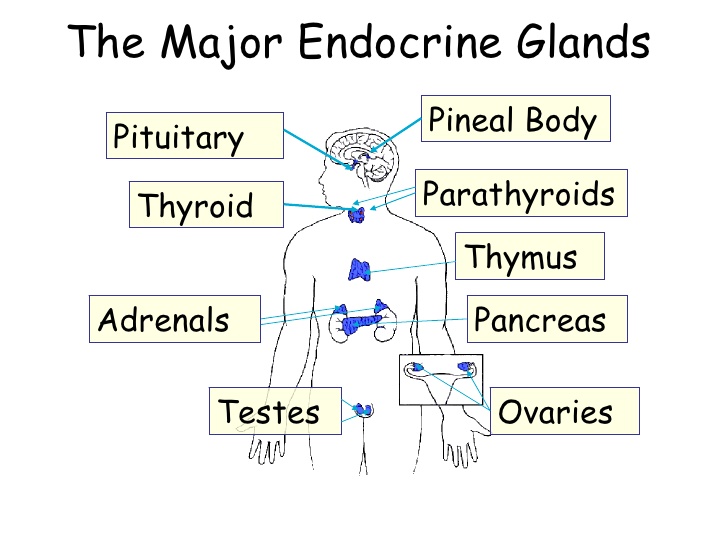
Functions of the glands
1. Pituitary gland
Location: base of brain
Functions: (1) it promotes growth of bones and muscles.
( 2) it is the master gland and controls other endocrine glands.
( 3) it stimulates and controls milk production by mammary glands.
2. Thyroid gland
Location: anterior region of neck
Functions: (1) regulates rate of metabolism especially respiration.
( 2) it stimulates mental and physical growth and development.
3. Parathyroid gland
Location: anterior part of the neck near the thyroid gland
Function: controls the level of calcium content in the blood.
4. Adrenal gland
Location: at the top of the kidneys.
Functions: (1) increases sugar content of the blood.
( 2) increase heartbeat and respiration.
( 3) prepares the body for emergency; it is called emergency hormone.
( 4) it aids dilation of the blood vessels.
( 5) increases muscular tone
( 6) it is associated with fear and anxiety.
5. Pancreas
Location: loop of the duodenum
Function: (1) maintains blood sugar level.
6. Testes
Location: scrotum
Functions: ( 1)stimulates the production of spermatozoa by the testes.
( 2) it stimulates the development of the male organ.
7. Stomach
Location: epithelium of the stomach
Function: it activates the gastric gland to produce gastric juice.
8. Ovaries
Location: within ovaries
Functions: (1) prepare uterus for the embryo.
( 2) maintains the foetus during development of uterus.
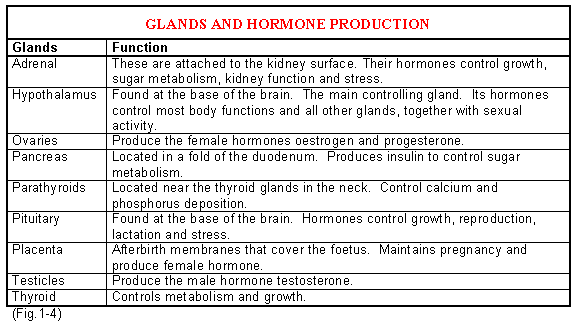
https://youtu.be/YI2qYRWzSZ4
EVALUATION:
Mention the major endocrine glands in the body.
State the location and functions of the glands
ASSIGNMENT:
Write four differences between nervous system and endocrine system.
further studies
http://www.ivy-rose.co.uk/HumanBody/End ... Glands.php
http://www.brodabarnes.org/endocrine_sys.htm
practice test
http://www.proprofs.com/quiz-school/qui ... &quesnum=1
LESSON 19
TOPIC: COMMUNICATION
OBJECTIVE: At the end of the lesson, the students should be able to:
1. Define communication.
2. Define mass media
CONTENT:
Communication is the process of giving, receiving and understanding messages. Communication is necessary in human relationships. It is a skill that can be learnt.
Mass media is a means of communication with the general public. These media include radio, television, telephone, microphone, magazines, newspapers etc. in the older days, information could be communicated through town criers, drums and gongs.

Internet is a collection of computer network that operates to common standards and enable computer and the programs they run to communicate directly. Internet connection is usually accomplished using international standards collectively called TCP (Transmission Control Protocol). Which are issued by an organization called Internet Engineering Task Force, combined with a network registration process and with the aid of public providers of internet access services, known as Internet Service Providers ISPs.
View some communication gadgets below
https://drive.google.com/file/d/16VTsJS ... sp=sharing
CHARACTERISTIC OF GOOD COMMUNICATION
1. Active listening
2. Simple language
3. Use of matching verbal and non verbal behaviour
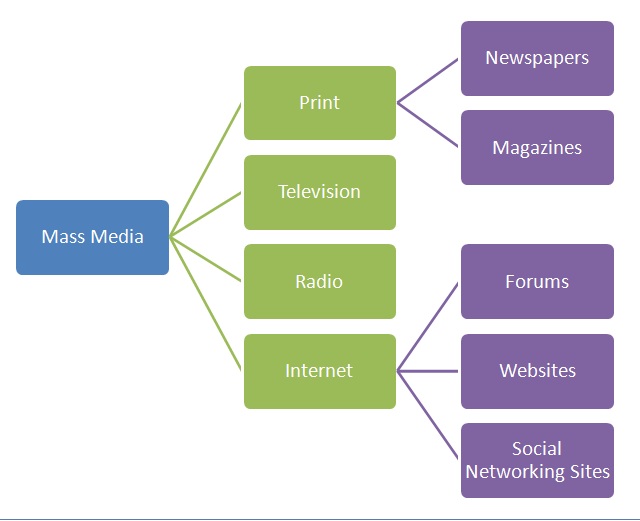
EVALUATION:
Define communication.
Define mass media.
Mention the uses of the internet.
ASSIGNMENT:
Find the full meaning of the following and their functions.
(a) DNS (b) SIM (c).com (d) e-mail
further studies
http://inventors.about.com/library/inve ... cation.htm
LESSON 20
Topic: DRUG ABUSE III
Content:
1. Effects of drug abuse
2. Prevention of drug abuse
3. Drug control Agencies
Meaning of drug abuse and Effects of Drug Abuse
MEANING OF DRUG ABUSE
Drug abuse is the use of drugs not prescribed by a doctor or using it in a way that is not in accordance with doctor’s prescription. In spite of the potential harm which all drugs pose to the health of users and society, people still use drugs without caution.
Illegal drugs are drugs that have been banned by law in a country. It is illegal to use, possess or supply such drugs. Some illegal drugs have been categorized as “ Prescription only”, meaning that they may only be used legally if prescribed by a doctor, but are illegal to use, possess or supply in any other circumstance.
SOME ILLEGAL DRUGS
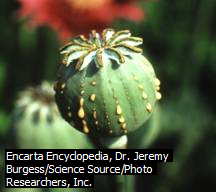
Opium poppy (source of morphine, codeine and heroin)
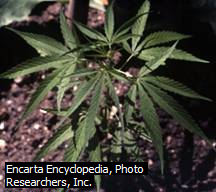
Marijuana Plant
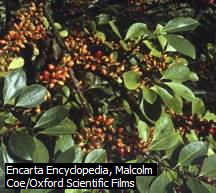
Coca plant (source of cocaine)
EFFECTS OF DRUG ABUSE
i. Stomach upset or discomfort.
ii. Damage to vital organs such as nostrils, lungs, liver, kidney, brain and heart.
iii. Rise in body temperature and blood pressure (hypertension).
iv. Palpitation or irregular heartbeat.
v. Difficulty in breathing.
vi. Injection abscess.
vii. Increase in the rate of HIV/AIDS infection through the sharing of unsterilized needles.
viii. Low immunity to diseases because disease agents become resistant to drugs.
ix. Skin rashes
x. Insomnia(sleeplessness)
xi. Depression
xii. Hallucination

Fetal Alcohol Syndrome: Fetal alcohol syndrome (FAS) is a set of birth defects caused by heavy consumption of alcohol during pregnancy. Children with this condition typically have a misproportioned head, facial deformities, mental retardation, and behavioral problems. FAS is the leading known cause of mental retardation in the Western Hemisphere.
LESSON 21
Socio-economic Consequences of Drug Abuse on Youths; Prevention of Drug Abuse
SOCIO-ECONOMIC CONSEQUENCES OF DRUG ABUSE ON YOUTHS
i. Behavioural changes responsible for truancy and disloyalty to constituted authorities in schools and the society at large.
ii. Acute memory loss leading to poor academic performance and eventual school abandonment.
iii. Panic syndromes which make the victims to be increasingly agitated, restless and confused.
iv. Violence and criminal tendencies e.g. rape, murder, suicide, armed robbery, battery and assault.
v. Destitution and insanity
vi. Road accidents.
vii. Low self-esteem by losing one’s sense of motivation.
viii. Stigmatization of families of victims of drug abuse especially addicts of illegal (hard) drugs that are also labeled with antisocial or criminal conducts.
ix. Economic loss from treatment and rehabilitation of destitute and the insane resulting from drug addiction.
x. Damage to human life and infrastructure which hinders community development.
PREVENTION OF DRUG ABUSE
i. Formation of healthy life style: parents should help their children to develop healthy life styles such as medical advice from qualified medical personnel when they are ill.
ii. Proper role modeling: adults in the society should endeavour to exhibit good and transparent conducts for children to emulate.
iii. Inculcating coping skills: addicts who want go off drugs should be engaged in skill acquisition programmes and sporting activities that will keep them busy.
iv. Regulating the sale of drugs: government should legislate against the distribution and marketing of addictable drugs. The sale and use of alcoholic beverages should be restricted to adults only.
v. Counseling: offering professional help to resolve personal and drug related problems.
Drug Control Agencies
In Nigeria, two drug control agencies have been established. These are;
1. National Drug Law Enforcement Agency(NDLEA)
2. National agency for food and drug administration and control (NAFDAC)


ACTIVITIES OF DRUG CONTROL AGENCIES
i. Regulating the importation, manufacture and distribution of foods and drugs.
ii. Enforcement of national drug laws by prosecuting defaulters of national drug laws and destruction of illegal drugs.
iii. Controlling the importation and exportation of illegal drugs such as cocaine, heroin, marijuana, etc.
iv. Controlling the distribution and sales of drugs
v. Ensuring quality control of drugs by destroying fake and substandard drugs.
vi. Arresting drug pushers

OTHER DUTIES OF NAFDAC
i. Ensuring that consumers have appropriate and accurate information about drugs and food they are using.
ii. Prosecuting defaulters of who manufacture and distribute substandard drugs and food substances.
iii. Inspection and certification of the production premises and raw materials for food, drugs and cosmetics.
iv. Registration of food and drug manufacturing companies.
v. Collaborating with NDLEA to eradicate drug abuse in Nigeria.
vi. Advising government at all levels and private sector regarding quality, safety and regulatory provisions on foods, drugs, cosmetics, etc.
EVALUATION
1. Define drug abuse.
2. Describe five adverse effects of drug use on youths and the family.
READING ASSIGNMENT: Functional Basic Science for JJS Book 3; by Onyirioha, C. U et al. (Pgs 39-44)
ASSIGNMENT:
1. Which one of these is not an effect of drug abuse
(A) Social nuisance (B) frustration (C) financial waste (D) mental stability (E) loss of sanity
2 which one of these is not an effect of uncontrolled use of drugs (A) one becoming richer (B) cancer of the lungs (C) kidney failure (D) eye defect (E) mental instability.
3. Which of these is not a strategy for preventing drug abuse? (A) avoiding bad company (B) interacting positively with peers (C) indulging in drinking and smoking (D) keeping oneself busy (E) upholding moral teaching and standards
4. Mention two way by which youths can maintain a drug abuse-free life
5. Describe briefly the activities of drug control agencies.
TOPIC: ENDOCRINE GLANDS
OBJECTIVE: At the end of the lesson, the students should be able to:
1. Mention main endocrine glands.
2. State the functions of the endocrine glands.
CONTENT:
MAIN ENDOCRINE GLANDS
i. Pituitary gland
ii. Thyroid gland
iii. Parathyroid gland
iv. Adrenal gland
v. Pancreas
vi. Glands of the gonads.

Functions of the glands
1. Pituitary gland
Location: base of brain
Functions: (1) it promotes growth of bones and muscles.
( 2) it is the master gland and controls other endocrine glands.
( 3) it stimulates and controls milk production by mammary glands.
2. Thyroid gland
Location: anterior region of neck
Functions: (1) regulates rate of metabolism especially respiration.
( 2) it stimulates mental and physical growth and development.
3. Parathyroid gland
Location: anterior part of the neck near the thyroid gland
Function: controls the level of calcium content in the blood.
4. Adrenal gland
Location: at the top of the kidneys.
Functions: (1) increases sugar content of the blood.
( 2) increase heartbeat and respiration.
( 3) prepares the body for emergency; it is called emergency hormone.
( 4) it aids dilation of the blood vessels.
( 5) increases muscular tone
( 6) it is associated with fear and anxiety.
5. Pancreas
Location: loop of the duodenum
Function: (1) maintains blood sugar level.
6. Testes
Location: scrotum
Functions: ( 1)stimulates the production of spermatozoa by the testes.
( 2) it stimulates the development of the male organ.
7. Stomach
Location: epithelium of the stomach
Function: it activates the gastric gland to produce gastric juice.
8. Ovaries
Location: within ovaries
Functions: (1) prepare uterus for the embryo.
( 2) maintains the foetus during development of uterus.

https://youtu.be/YI2qYRWzSZ4
EVALUATION:
Mention the major endocrine glands in the body.
State the location and functions of the glands
ASSIGNMENT:
Write four differences between nervous system and endocrine system.
further studies
http://www.ivy-rose.co.uk/HumanBody/End ... Glands.php
http://www.brodabarnes.org/endocrine_sys.htm
practice test
http://www.proprofs.com/quiz-school/qui ... &quesnum=1
LESSON 19
TOPIC: COMMUNICATION
OBJECTIVE: At the end of the lesson, the students should be able to:
1. Define communication.
2. Define mass media
CONTENT:
Communication is the process of giving, receiving and understanding messages. Communication is necessary in human relationships. It is a skill that can be learnt.
Mass media is a means of communication with the general public. These media include radio, television, telephone, microphone, magazines, newspapers etc. in the older days, information could be communicated through town criers, drums and gongs.

Internet is a collection of computer network that operates to common standards and enable computer and the programs they run to communicate directly. Internet connection is usually accomplished using international standards collectively called TCP (Transmission Control Protocol). Which are issued by an organization called Internet Engineering Task Force, combined with a network registration process and with the aid of public providers of internet access services, known as Internet Service Providers ISPs.
View some communication gadgets below
https://drive.google.com/file/d/16VTsJS ... sp=sharing
CHARACTERISTIC OF GOOD COMMUNICATION
1. Active listening
2. Simple language
3. Use of matching verbal and non verbal behaviour

EVALUATION:
Define communication.
Define mass media.
Mention the uses of the internet.
ASSIGNMENT:
Find the full meaning of the following and their functions.
(a) DNS (b) SIM (c).com (d) e-mail
further studies
http://inventors.about.com/library/inve ... cation.htm
LESSON 20
Topic: DRUG ABUSE III
Content:
1. Effects of drug abuse
2. Prevention of drug abuse
3. Drug control Agencies
Meaning of drug abuse and Effects of Drug Abuse
MEANING OF DRUG ABUSE
Drug abuse is the use of drugs not prescribed by a doctor or using it in a way that is not in accordance with doctor’s prescription. In spite of the potential harm which all drugs pose to the health of users and society, people still use drugs without caution.
Illegal drugs are drugs that have been banned by law in a country. It is illegal to use, possess or supply such drugs. Some illegal drugs have been categorized as “ Prescription only”, meaning that they may only be used legally if prescribed by a doctor, but are illegal to use, possess or supply in any other circumstance.
SOME ILLEGAL DRUGS

Opium poppy (source of morphine, codeine and heroin)

Marijuana Plant

Coca plant (source of cocaine)
EFFECTS OF DRUG ABUSE
i. Stomach upset or discomfort.
ii. Damage to vital organs such as nostrils, lungs, liver, kidney, brain and heart.
iii. Rise in body temperature and blood pressure (hypertension).
iv. Palpitation or irregular heartbeat.
v. Difficulty in breathing.
vi. Injection abscess.
vii. Increase in the rate of HIV/AIDS infection through the sharing of unsterilized needles.
viii. Low immunity to diseases because disease agents become resistant to drugs.
ix. Skin rashes
x. Insomnia(sleeplessness)
xi. Depression
xii. Hallucination

Fetal Alcohol Syndrome: Fetal alcohol syndrome (FAS) is a set of birth defects caused by heavy consumption of alcohol during pregnancy. Children with this condition typically have a misproportioned head, facial deformities, mental retardation, and behavioral problems. FAS is the leading known cause of mental retardation in the Western Hemisphere.
LESSON 21
Socio-economic Consequences of Drug Abuse on Youths; Prevention of Drug Abuse
SOCIO-ECONOMIC CONSEQUENCES OF DRUG ABUSE ON YOUTHS
i. Behavioural changes responsible for truancy and disloyalty to constituted authorities in schools and the society at large.
ii. Acute memory loss leading to poor academic performance and eventual school abandonment.
iii. Panic syndromes which make the victims to be increasingly agitated, restless and confused.
iv. Violence and criminal tendencies e.g. rape, murder, suicide, armed robbery, battery and assault.
v. Destitution and insanity
vi. Road accidents.
vii. Low self-esteem by losing one’s sense of motivation.
viii. Stigmatization of families of victims of drug abuse especially addicts of illegal (hard) drugs that are also labeled with antisocial or criminal conducts.
ix. Economic loss from treatment and rehabilitation of destitute and the insane resulting from drug addiction.
x. Damage to human life and infrastructure which hinders community development.
PREVENTION OF DRUG ABUSE
i. Formation of healthy life style: parents should help their children to develop healthy life styles such as medical advice from qualified medical personnel when they are ill.
ii. Proper role modeling: adults in the society should endeavour to exhibit good and transparent conducts for children to emulate.
iii. Inculcating coping skills: addicts who want go off drugs should be engaged in skill acquisition programmes and sporting activities that will keep them busy.
iv. Regulating the sale of drugs: government should legislate against the distribution and marketing of addictable drugs. The sale and use of alcoholic beverages should be restricted to adults only.
v. Counseling: offering professional help to resolve personal and drug related problems.
Drug Control Agencies
In Nigeria, two drug control agencies have been established. These are;
1. National Drug Law Enforcement Agency(NDLEA)
2. National agency for food and drug administration and control (NAFDAC)


ACTIVITIES OF DRUG CONTROL AGENCIES
i. Regulating the importation, manufacture and distribution of foods and drugs.
ii. Enforcement of national drug laws by prosecuting defaulters of national drug laws and destruction of illegal drugs.
iii. Controlling the importation and exportation of illegal drugs such as cocaine, heroin, marijuana, etc.
iv. Controlling the distribution and sales of drugs
v. Ensuring quality control of drugs by destroying fake and substandard drugs.
vi. Arresting drug pushers

OTHER DUTIES OF NAFDAC
i. Ensuring that consumers have appropriate and accurate information about drugs and food they are using.
ii. Prosecuting defaulters of who manufacture and distribute substandard drugs and food substances.
iii. Inspection and certification of the production premises and raw materials for food, drugs and cosmetics.
iv. Registration of food and drug manufacturing companies.
v. Collaborating with NDLEA to eradicate drug abuse in Nigeria.
vi. Advising government at all levels and private sector regarding quality, safety and regulatory provisions on foods, drugs, cosmetics, etc.
EVALUATION
1. Define drug abuse.
2. Describe five adverse effects of drug use on youths and the family.
READING ASSIGNMENT: Functional Basic Science for JJS Book 3; by Onyirioha, C. U et al. (Pgs 39-44)
ASSIGNMENT:
1. Which one of these is not an effect of drug abuse
(A) Social nuisance (B) frustration (C) financial waste (D) mental stability (E) loss of sanity
2 which one of these is not an effect of uncontrolled use of drugs (A) one becoming richer (B) cancer of the lungs (C) kidney failure (D) eye defect (E) mental instability.
3. Which of these is not a strategy for preventing drug abuse? (A) avoiding bad company (B) interacting positively with peers (C) indulging in drinking and smoking (D) keeping oneself busy (E) upholding moral teaching and standards
4. Mention two way by which youths can maintain a drug abuse-free life
5. Describe briefly the activities of drug control agencies.
WEEK 6
LESSON 22
TOPIC: RELEVANCE OF COMMUNICATION
OBJECTIVE: At the end of the lesson, the students should be able to:
1. State qualities of a good media programme.
2. Enumerate the relevance of communication to human development and family life.
CONTENT:
QUALITIES OF GOOD MEDIA PROGRAMME
Adults should decide what media programme is desirable for children. This is because children may be influenced negatively by what they watch.
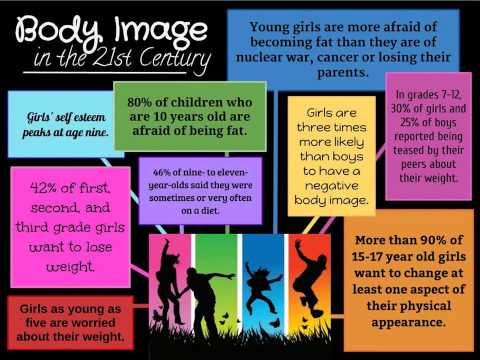
The following are some of the good qualities of media programme.
1. Make you feel better.
2. Encourage you to do good.
3. Enable you to care for others.
4. Teach appropriate behaviour.
5. Provide entertainment.
6. Enhance decision - making skills.
7. Discourage gender bias.
8. Teach appropriate sexuality values e.g. trust, honesty, consideration.
9. Provide accurate information.
10. Discourage tribal, religious sentiment or war.
Relevance of Communication
1. It is the foundation of all interpersonal relationships.
2. Communication enables people to learn further and understand themselves.
3. It prevents or reduces conflicts.
4. It promotes respect for one another.
5. It promotes self image.
EVALUATION:
Mention the qualities of good media programme.
Enumerate the relevance of communication.
further studies
http://www.slideshare.net/marketeach/me ... esentation
LESSON 23
TOPIC: NEGATIVE AND POSITIVE USE OF MEDIA AND INTERNET.
OBJECTIVE: At the end of the lesson, the students should be able to:
1. State the negative impact of internet.
2. Enumerate positive impact of internet and media.
CONTENT:
Positive Impact of Information
1. It is used in sending and receiving messages across the world in seconds.
2. It helps in search for information.
3. With the internet, trips (i.e. travelling) can be planned.
4. The internet is used for electronic conversation or communication around the world.
5. Enables buying and selling throughout the world.

Negative Impact of Internet
1. There are incorrect and misleading information on the internet.
2. It leads to addiction.

EVALUATION:
Mention the negative impacts of the internet.
State the positive impact of the internet.
Mention different ICT tools through which we can connect to the internet.
practice test
http://www.oup.com/us/companion.website ... ests/quiz/
LESSON 24
METABOLISM IN HUMAN BODY
Content:
1. Metabolism and Digestion of food
2. Absorption of food in the body
3. Forms in which excess food are stored; Places of storage;
4. Problems associated with food storage in the body
Metabolism and Digestion of food
METABOLISM
Metabolism refers to the chemical processes in living cells which change food into energy and materials for growth. Two main processes occur simultaneously during metabolism and they are;
i. Anabolism ii. Catabolism
i. Anabolism: this is the process by which large, complex molecules are built up from smaller and simpler ones. This process uses up energy, examples of anabolic processes include growth and repair of cells in the body of organisms
ii. Catabolism: this is the process whereby complex molecules are broken down into simpler ones. Energy is released during the process, examples of catabolic processes include respiration and digestion.
DIGESTION OF FOOD
Digestion is the process by which ingested food materials are broken down into simpler particles which can be absorbed into the body. Digestion starts in the mouth where food is broken into smaller pieces, moistened with saliva and the enzyme, ptyalin present in the saliva begins the digestion of starch present in the food which chemically breaks it down to maltose. The food is swallowed and passed through the oesophagus or gullet which is the connecting tube from the mouth to the stomach. In the stomach, the food is churned by its muscular walls to chime (a semi-liquid). The digestion of protein starts in the stomach where the cells secret gastric juice which contains dilute hydrochloric acid as well as enzymes such as pepsin and rennin. The dilute acid neutralizes saliva which is alkaline, and stops the action of ptyalin.
Pepsin digests protein in food to peptones; rennin digests milk protein by coagulating it. The semi digested food is passed to the small intestine where the process of digestion is completed and adsorption of nutrients takes place. The bile produced by the liver is poured unto the partially digested food in the duodenum emulsifying the fat present in the food to fatty acids and glycerol.
Trypsin, one of the enzymes in pancreatic juice digests peptone to peptides while pancreatic amylase (another enzyme) breaks the starch into maltose. The food is then passed to the ileum (second part of the small intestine) where the digestion process is completed. Here; maltose is broken down to glucose, peptides are broken down into amino acids, and fats are broken down to fatty acids and glycerol.
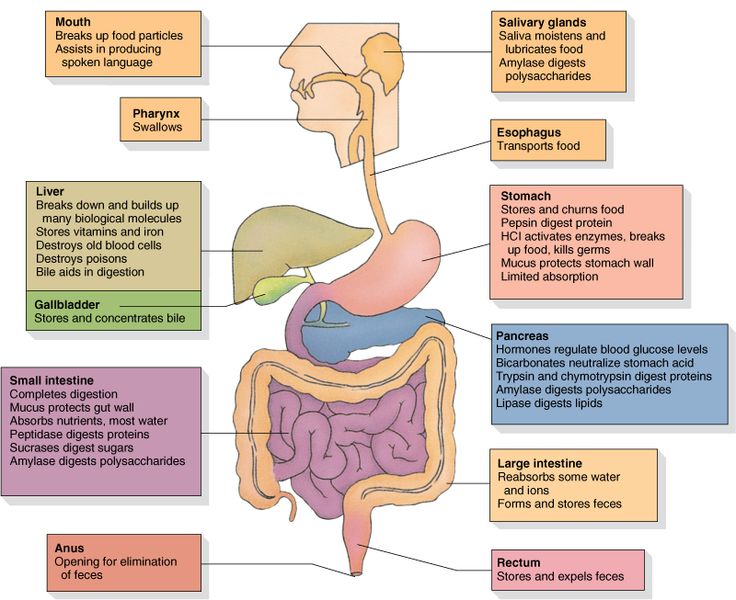
Human digestive system
Absorption of food in the body
Absorption is the process of collecting the broken down (digested) food materials from the digestive system into the blood stream for use by the body. Adsorption of food takes place in the ileum, this is because the entire internal surface of the ileum is covered by villi (singular: villus). The soluble end-products of digestion are absorbed into the bloodstream through the villi. The villi have a dense network of blood capillaries joined together to form the hepatic portal vein. This vein carries digested food to the liver where it is gradually released into the bloodstream to be taken to the different cells for use.
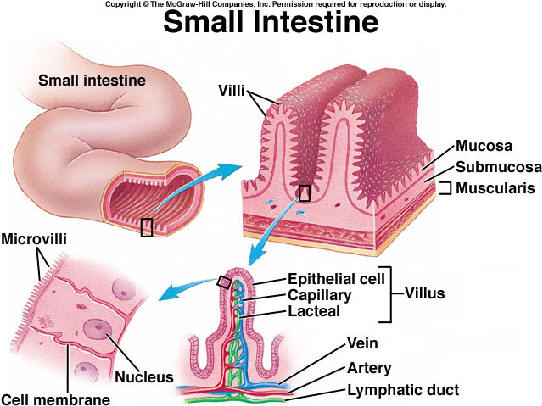
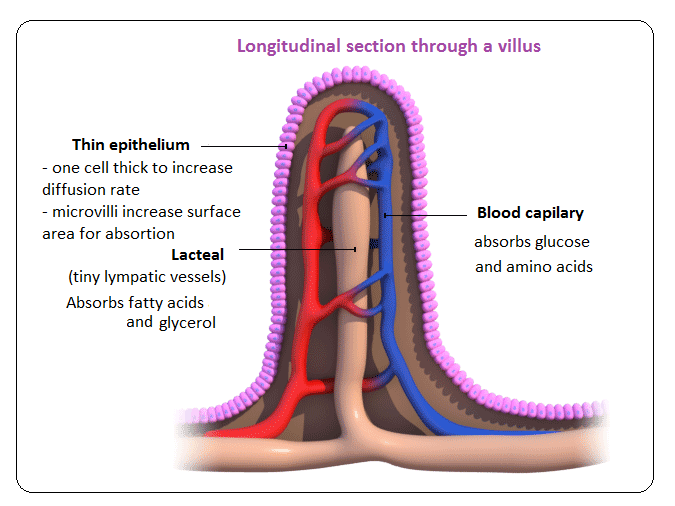
Diagram of villus
Forms in which excess food are stored
FORMS IN WHICH EXCESS FOOD ARE STORED
The main function of the liver is to regulate the amount of food that enters the bloodstream. It does this by storing digested food brought by hepatic portal vein and releases the food gradually into the bloodstream as the body needs it.
The liver stores excess glucose in the form of glycogen.
The liver can only take small amounts of amino acids, the excess amino acid gets into the liver, and these are broken down into ammonia by the process called deamination. Ammonia is very poisonous and kills if left to accumulate in the body, so the liver converts the ammonia into urea which is far less poisonous. Urea is passed into the kidney and taken out as urine.
Excess fats are stored in adipose cells under the skin, around organs and between muscles. When energy is needed and glycogen is not available, fats are broken down to form glucose which is respired to give energy.
The liver temporarily holds vitamins A, D and B12 together with minerals such as iron, copper and potassium till the body requires them.
PLACES OF STORAGE:
Most excess food such as carbohydrates and proteins are converted to glycogen and stored by the liver to be gradually released as the body needs them.

Food storage in the body
Excess fats are stored in adipose tissue under the skin around the organs and between muscles of the body parts such as the arm, buttocks, the thighs and the stomach.
PROBLEMS ASSOCIATED WITH FOOD STORAGE IN THE BODY:
When excess food more than needed by the body is eaten, the surplus is stored as fat and the person becomes overweight. This condition is known as Obesity. Obesity predisposes one to diseases such as high blood pressure, diabetes and diseases of the heart (circulatory system), such as coronary heart disease, arthritis and stroke.
Vitamins do not form new compounds in the body as carbohydrates, protein and fat do but help chemical reaction to take place, excess fat soluble vitamins(A, D, E and K) cannot be excreted but stored in the fatty tissues where they may build to toxic level. Recent studies show that overdose of vitamin may cause kidney problem.
EVALUATION
i. Describe the process of digestion and adsorption
ii. Give two reasons why excess protein is harmful to the body
READING ASSIGNMENT: Functional Basic Science for JSS Book 3; by Onyirioha, C. U et al. (Pgs 45-50)
ASSIGNMENT
i. Which of the following best describes the action of bile on fat? (A) digestion (B) emulsification (C) ingestion (D) absorption
ii. The process of deamination occurs in the: (A) kidney (B) liver (C) large intestine (D) stomach
iii. Digested carbohydrates are carried directly to the: (A) heart (B) liver (C) pancreas (D) kidney
iv. Digestion of protein starts in the: (A) stomach (B) mouth (C) liver (D) ileum
v. Pepsin digests protein to: (A) peptones (B) peptides (C) amino acid (D) glycerol
vi. Write short note on the following;
a. Metabolism
b. Anabolism
c. Catabolism
TOPIC: RELEVANCE OF COMMUNICATION
OBJECTIVE: At the end of the lesson, the students should be able to:
1. State qualities of a good media programme.
2. Enumerate the relevance of communication to human development and family life.
CONTENT:
QUALITIES OF GOOD MEDIA PROGRAMME
Adults should decide what media programme is desirable for children. This is because children may be influenced negatively by what they watch.

The following are some of the good qualities of media programme.
1. Make you feel better.
2. Encourage you to do good.
3. Enable you to care for others.
4. Teach appropriate behaviour.
5. Provide entertainment.
6. Enhance decision - making skills.
7. Discourage gender bias.
8. Teach appropriate sexuality values e.g. trust, honesty, consideration.
9. Provide accurate information.
10. Discourage tribal, religious sentiment or war.
Relevance of Communication
1. It is the foundation of all interpersonal relationships.
2. Communication enables people to learn further and understand themselves.
3. It prevents or reduces conflicts.
4. It promotes respect for one another.
5. It promotes self image.
EVALUATION:
Mention the qualities of good media programme.
Enumerate the relevance of communication.
further studies
http://www.slideshare.net/marketeach/me ... esentation
LESSON 23
TOPIC: NEGATIVE AND POSITIVE USE OF MEDIA AND INTERNET.
OBJECTIVE: At the end of the lesson, the students should be able to:
1. State the negative impact of internet.
2. Enumerate positive impact of internet and media.
CONTENT:
Positive Impact of Information
1. It is used in sending and receiving messages across the world in seconds.
2. It helps in search for information.
3. With the internet, trips (i.e. travelling) can be planned.
4. The internet is used for electronic conversation or communication around the world.
5. Enables buying and selling throughout the world.

Negative Impact of Internet
1. There are incorrect and misleading information on the internet.
2. It leads to addiction.

EVALUATION:
Mention the negative impacts of the internet.
State the positive impact of the internet.
Mention different ICT tools through which we can connect to the internet.
practice test
http://www.oup.com/us/companion.website ... ests/quiz/
LESSON 24
METABOLISM IN HUMAN BODY
Content:
1. Metabolism and Digestion of food
2. Absorption of food in the body
3. Forms in which excess food are stored; Places of storage;
4. Problems associated with food storage in the body
Metabolism and Digestion of food
METABOLISM
Metabolism refers to the chemical processes in living cells which change food into energy and materials for growth. Two main processes occur simultaneously during metabolism and they are;
i. Anabolism ii. Catabolism
i. Anabolism: this is the process by which large, complex molecules are built up from smaller and simpler ones. This process uses up energy, examples of anabolic processes include growth and repair of cells in the body of organisms
ii. Catabolism: this is the process whereby complex molecules are broken down into simpler ones. Energy is released during the process, examples of catabolic processes include respiration and digestion.
DIGESTION OF FOOD
Digestion is the process by which ingested food materials are broken down into simpler particles which can be absorbed into the body. Digestion starts in the mouth where food is broken into smaller pieces, moistened with saliva and the enzyme, ptyalin present in the saliva begins the digestion of starch present in the food which chemically breaks it down to maltose. The food is swallowed and passed through the oesophagus or gullet which is the connecting tube from the mouth to the stomach. In the stomach, the food is churned by its muscular walls to chime (a semi-liquid). The digestion of protein starts in the stomach where the cells secret gastric juice which contains dilute hydrochloric acid as well as enzymes such as pepsin and rennin. The dilute acid neutralizes saliva which is alkaline, and stops the action of ptyalin.
Pepsin digests protein in food to peptones; rennin digests milk protein by coagulating it. The semi digested food is passed to the small intestine where the process of digestion is completed and adsorption of nutrients takes place. The bile produced by the liver is poured unto the partially digested food in the duodenum emulsifying the fat present in the food to fatty acids and glycerol.
Trypsin, one of the enzymes in pancreatic juice digests peptone to peptides while pancreatic amylase (another enzyme) breaks the starch into maltose. The food is then passed to the ileum (second part of the small intestine) where the digestion process is completed. Here; maltose is broken down to glucose, peptides are broken down into amino acids, and fats are broken down to fatty acids and glycerol.

Human digestive system
Absorption of food in the body
Absorption is the process of collecting the broken down (digested) food materials from the digestive system into the blood stream for use by the body. Adsorption of food takes place in the ileum, this is because the entire internal surface of the ileum is covered by villi (singular: villus). The soluble end-products of digestion are absorbed into the bloodstream through the villi. The villi have a dense network of blood capillaries joined together to form the hepatic portal vein. This vein carries digested food to the liver where it is gradually released into the bloodstream to be taken to the different cells for use.


Diagram of villus
Forms in which excess food are stored
FORMS IN WHICH EXCESS FOOD ARE STORED
The main function of the liver is to regulate the amount of food that enters the bloodstream. It does this by storing digested food brought by hepatic portal vein and releases the food gradually into the bloodstream as the body needs it.
The liver stores excess glucose in the form of glycogen.
The liver can only take small amounts of amino acids, the excess amino acid gets into the liver, and these are broken down into ammonia by the process called deamination. Ammonia is very poisonous and kills if left to accumulate in the body, so the liver converts the ammonia into urea which is far less poisonous. Urea is passed into the kidney and taken out as urine.
Excess fats are stored in adipose cells under the skin, around organs and between muscles. When energy is needed and glycogen is not available, fats are broken down to form glucose which is respired to give energy.
The liver temporarily holds vitamins A, D and B12 together with minerals such as iron, copper and potassium till the body requires them.
PLACES OF STORAGE:
Most excess food such as carbohydrates and proteins are converted to glycogen and stored by the liver to be gradually released as the body needs them.

Food storage in the body
Excess fats are stored in adipose tissue under the skin around the organs and between muscles of the body parts such as the arm, buttocks, the thighs and the stomach.
PROBLEMS ASSOCIATED WITH FOOD STORAGE IN THE BODY:
When excess food more than needed by the body is eaten, the surplus is stored as fat and the person becomes overweight. This condition is known as Obesity. Obesity predisposes one to diseases such as high blood pressure, diabetes and diseases of the heart (circulatory system), such as coronary heart disease, arthritis and stroke.
Vitamins do not form new compounds in the body as carbohydrates, protein and fat do but help chemical reaction to take place, excess fat soluble vitamins(A, D, E and K) cannot be excreted but stored in the fatty tissues where they may build to toxic level. Recent studies show that overdose of vitamin may cause kidney problem.
EVALUATION
i. Describe the process of digestion and adsorption
ii. Give two reasons why excess protein is harmful to the body
READING ASSIGNMENT: Functional Basic Science for JSS Book 3; by Onyirioha, C. U et al. (Pgs 45-50)
ASSIGNMENT
i. Which of the following best describes the action of bile on fat? (A) digestion (B) emulsification (C) ingestion (D) absorption
ii. The process of deamination occurs in the: (A) kidney (B) liver (C) large intestine (D) stomach
iii. Digested carbohydrates are carried directly to the: (A) heart (B) liver (C) pancreas (D) kidney
iv. Digestion of protein starts in the: (A) stomach (B) mouth (C) liver (D) ileum
v. Pepsin digests protein to: (A) peptones (B) peptides (C) amino acid (D) glycerol
vi. Write short note on the following;
a. Metabolism
b. Anabolism
c. Catabolism
WEEK 7
LESSON 25
TOPIC: PORTRAYALS OF BODY IMAGE BY THE MEDIA.
OBJECTIVE: At the end of the lesson, the students should be able to:
1. Mention or describe positive portrayal of the body.
2. Describe negative portrayal of the body by the media.
CONTENT:
Positive Media Portrayal of Images
1. Families working together.
2. Children being educated.
3. Children being cared for by parents or teachers.
4. Both boys and girls included and supported in athletics.
5. Both boys and girls in engaging in some work assumed to be for one sex.


Negative Media Portrayals of Images
1. Pornography
2. Sexualized appearance
3. Indecent dressing
4. Vulgar expression in image
5. Chaotic scene
6. Drug addicted images


EVALUATION:
Describe some positive media images.
Mention negative images and their implications.
further studies
http://www.webmd.com/parenting/features ... body-image
http://bellawoman.50megs.com/custom.html
http://femaleimagemedia.blogspot.com/
LESSON 26
SPECIFIC TOPIC : communication-sexuality information portrayed in the media
REFERENCE BK : - Integrated Science [Made Easy] For Nigerian Junior Secondary School- Book Three By F.I Kehinde.
PERFORMANCE OBJECTIVE: At the end of the lesson the students should be able to:
(1) List the media materials that portrayed sexual information
(2) State the media materials where sexual information is useful
CONTENT:
SEXUALITY INFORMATION PORTRAYED IN THE MEDIA
There is a lot of sexuality information messages portrayed in radio, television, movies, music, art, magazines, newspapers which are educational and beneficial. The message may be negative, hurtful and incorrect. Many adults do not feel comfortable about the message children receive from the media.
Sexuality information portrayed possibly in advertisement, cartoons, and pornographic films may send many types of messages. Young people may believe these messages, unless there are adults who can help talk about, analyze and determine which valid portrayals are and which are not.

Examples of some of the sexuality information portrayed in the media are:
1. Women are sexual objects
2. Men are powerful and in charge
3. Women enjoy being forced and beaten
4. Only young people have fun or pleasurable sex
5. Sexual intercourse between married couples is boring
6. It seems that in some video, every one is having sexual intercourse.
7. All people have big sexy bodies (male have big genitals in art work)
8. Women in sexy clothing suggest that women need to wear this in order to attract a man.
9. Emphasis on physical appearance tells us that there is an optimum and shape to which we must adhere or we are valued.

EVALUATION/CLASSWORK- List and explain some ways the media portray sexuality negatively and positively.
further studies
http://www.ncbi.nlm.nih.gov/pmc/articles/PMC1070813/
LESSON 27
SPECIFIC TOPIC : communication- negative and positive portrayal of relationships and sexuality
REFERENCE BK : - Integrated Science [Made Easy] For Nigerian Junior Secondary School- Book Three By F.I Kehinde.
PERFORMANCE OBJECTIVE: At the end of the lesson the students should be able to:
(1) State the examples of negative and positive portrayal of sexuality
CONTENT:
NEGATIVE AND POSITIVE PORTRAYAL OF RELATIONSHIPS AND SEXUALITY
Below are examples of both negative and positive portrayals of sexuality in the media.
Negative media portrayal of sexuality: Pornography, sexualized appearance, indecent dressing, vulgar expression in image, paintings, music etc.
Positive media portrayal of sexuality: Family working together, children being educated and cared for. Both boys and girls included and supported in athletics, academics pursuit etc. males and females being treated with respect.

EVALUATION/CLASSWORK- Give an example of positive portrayal of relationships and sexuality
further studies
http://www.ehow.com/about_6671177_relat ... avior.html
http://usftherapist.wordpress.com/2009/ ... elevision/
TOPIC: PORTRAYALS OF BODY IMAGE BY THE MEDIA.
OBJECTIVE: At the end of the lesson, the students should be able to:
1. Mention or describe positive portrayal of the body.
2. Describe negative portrayal of the body by the media.
CONTENT:
Positive Media Portrayal of Images
1. Families working together.
2. Children being educated.
3. Children being cared for by parents or teachers.
4. Both boys and girls included and supported in athletics.
5. Both boys and girls in engaging in some work assumed to be for one sex.


Negative Media Portrayals of Images
1. Pornography
2. Sexualized appearance
3. Indecent dressing
4. Vulgar expression in image
5. Chaotic scene
6. Drug addicted images


EVALUATION:
Describe some positive media images.
Mention negative images and their implications.
further studies
http://www.webmd.com/parenting/features ... body-image
http://bellawoman.50megs.com/custom.html
http://femaleimagemedia.blogspot.com/
LESSON 26
SPECIFIC TOPIC : communication-sexuality information portrayed in the media
REFERENCE BK : - Integrated Science [Made Easy] For Nigerian Junior Secondary School- Book Three By F.I Kehinde.
PERFORMANCE OBJECTIVE: At the end of the lesson the students should be able to:
(1) List the media materials that portrayed sexual information
(2) State the media materials where sexual information is useful
CONTENT:
SEXUALITY INFORMATION PORTRAYED IN THE MEDIA
There is a lot of sexuality information messages portrayed in radio, television, movies, music, art, magazines, newspapers which are educational and beneficial. The message may be negative, hurtful and incorrect. Many adults do not feel comfortable about the message children receive from the media.
Sexuality information portrayed possibly in advertisement, cartoons, and pornographic films may send many types of messages. Young people may believe these messages, unless there are adults who can help talk about, analyze and determine which valid portrayals are and which are not.

Examples of some of the sexuality information portrayed in the media are:
1. Women are sexual objects
2. Men are powerful and in charge
3. Women enjoy being forced and beaten
4. Only young people have fun or pleasurable sex
5. Sexual intercourse between married couples is boring
6. It seems that in some video, every one is having sexual intercourse.
7. All people have big sexy bodies (male have big genitals in art work)
8. Women in sexy clothing suggest that women need to wear this in order to attract a man.
9. Emphasis on physical appearance tells us that there is an optimum and shape to which we must adhere or we are valued.

EVALUATION/CLASSWORK- List and explain some ways the media portray sexuality negatively and positively.
further studies
http://www.ncbi.nlm.nih.gov/pmc/articles/PMC1070813/
LESSON 27
SPECIFIC TOPIC : communication- negative and positive portrayal of relationships and sexuality
REFERENCE BK : - Integrated Science [Made Easy] For Nigerian Junior Secondary School- Book Three By F.I Kehinde.
PERFORMANCE OBJECTIVE: At the end of the lesson the students should be able to:
(1) State the examples of negative and positive portrayal of sexuality
CONTENT:
NEGATIVE AND POSITIVE PORTRAYAL OF RELATIONSHIPS AND SEXUALITY
Below are examples of both negative and positive portrayals of sexuality in the media.
Negative media portrayal of sexuality: Pornography, sexualized appearance, indecent dressing, vulgar expression in image, paintings, music etc.
Positive media portrayal of sexuality: Family working together, children being educated and cared for. Both boys and girls included and supported in athletics, academics pursuit etc. males and females being treated with respect.

EVALUATION/CLASSWORK- Give an example of positive portrayal of relationships and sexuality
further studies
http://www.ehow.com/about_6671177_relat ... avior.html
http://usftherapist.wordpress.com/2009/ ... elevision/
WEEK 8
LESSON 28
Topic: SENSE ORGANS (revised)
Content: 1. Sense organs and their uses
2. The brain, spinal cord and the nerve as central nervous system(CNS)
3. Simple reflex action
4. Types of eye defects and their corrections
Sense organs and their uses
Human beings receive and react to stimuli or changes that occur within and outside the body of the individual.
A stimulus is anything that makes us to react; and our reaction to stimulus is known as response. Sense organs are part of the human nervous system, there are five sense organs in the human body. They are;
i. Eyes
ii. Ears
iii. Skin
iv. Tongue
v. Nose
THE EYE
The eye enables us to see things and appreciate differences in their size, colour, and shapes. The human eye consists of three layers namely:
i. The outermost layer which is made up of cornea and sclera
ii. The middle layer which contains choroids, ciliary muscle and iris
iii. The inner layer called the retina. The retina is a layer of light sensitive cells known as rods and cones.

A vertical section through the eye
THE EAR
The best known function of the ear is hearing. However, the ear also enables us to maintain our balance.

The human ear
The human ear is composed of three major parts. These are:
3. Outer (external) ear which consists of a funnel shaped pinna (plural: pinnae). The pinna collects sound waves and directs them to the eardrum through the auditory canal
4. Middle ear which is located in the skull contains three bones namely;
a. Hammer (malleus)
b. Anvil (incus)
c. Stirrup (stapes)
5. Inner ear is located deep in the skull. The inner ear is made up oval windows, cochlea and semi-circular canal. The inner ear receives sound impulses from the middle ear and transmits them through the auditory nerves to the brain for interpretation.
FUNCTIONS OF EAR
i. For hearing
ii. Maintaining balance
iii. Determining the nature and direction of sound.
THE NOSE
The nose is made up of two nostrils, there are certain small glands that produce mucus, a watery substance that keeps the nose moist.
FUNCTIONS OF THE NOSE
i. The nose is used for breathing
ii. For perceiving smell; the sensation of smell is sent to the brain by the olfactory nerves.
THE TONGUE
The tongue is used to detect tastes of things thereby differentiating sweet, sour, bitter, salty and tasteless substances. Taste impulses picked up by the taste buds are conducted through the sensory nerves (neurons) to the brain for interpretation.
THE SKIN
The skin is the largest sense organ in the body. It covers the whole body, it contains several distinct receptors (sensory cells) which enables it to receive and respond to external stimuli.
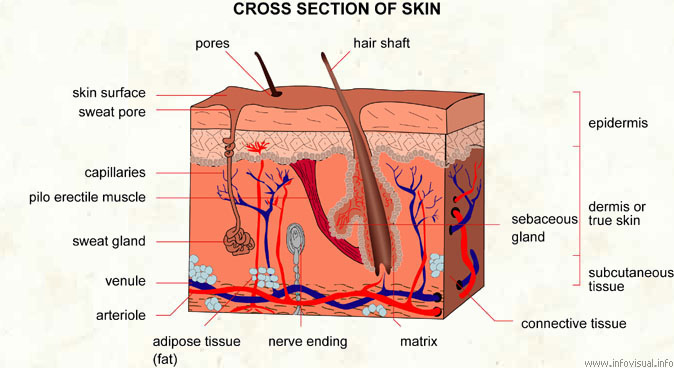
Cut-section of human skin
FUNCTIONS OF THE SKIN
i. The skin is used for detecting stimulus of touch
ii. For detecting stimulus of pressure and pain
iii. For sensing changes in temperature
LESSON 29
The brain, spinal cord and nerves (central nervous system)
The brain and spinal cord constitute the central nervous system. The nerves and the neurons form the peripheral nervous system. The nervous system is concerned with coordination and communication of internal and external sensations in living organisms.
THE BRAIN
The brain is the major coordinating and control center of all body activities, it is described as the main switching unit because it receives, interprets and responds to impulses. It is a delicate organ of mass of neurons covered up by a three-layered connective tissue called meninges. The brain is further protected by a bony structure called skull
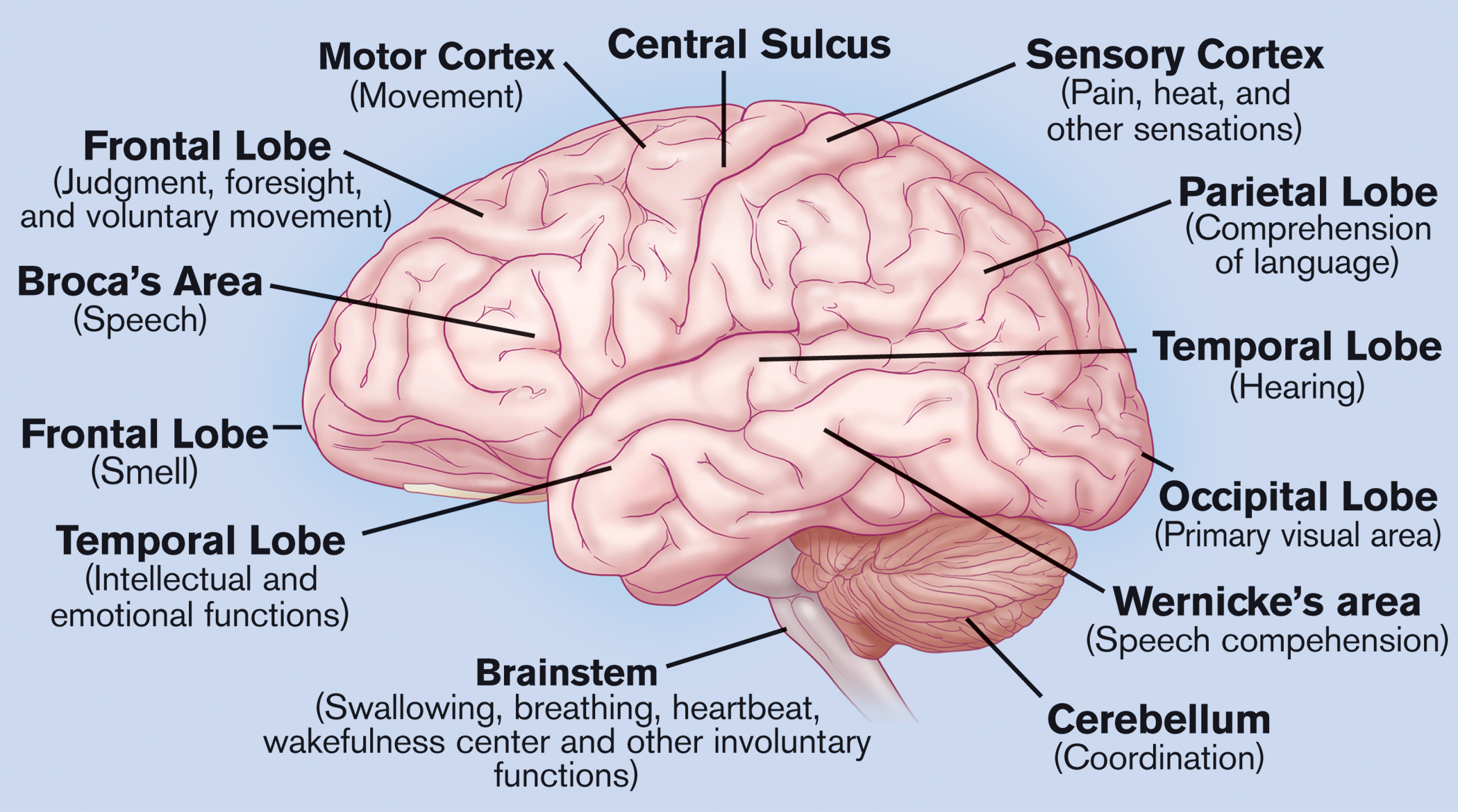
THE SPINAL CORD
The spinal cord is the link between the brain and nerves. A section through the spinal cord reveals two types of nerve tissues namely; (i) grey matter (ii) white matter.
The spinal cord does the following;
i. It carries impulses to and from the brain
ii. it controls reflex activities
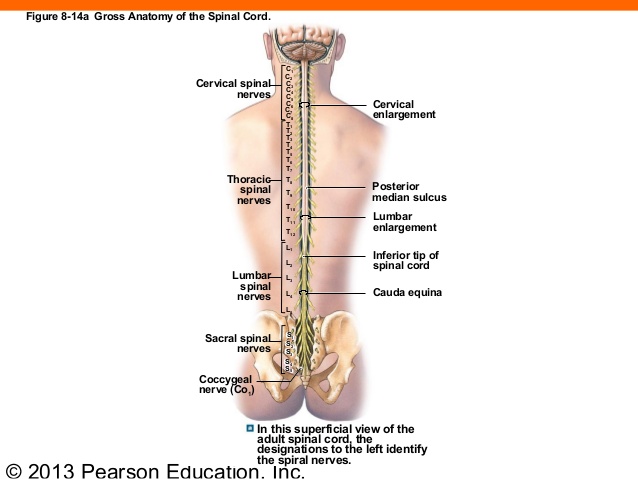
THE NERVES
The nerves are extensions from the spinal cord. They link the brain and spinal cord to the rest of the body. Hence, they are described as peripheral nerves.
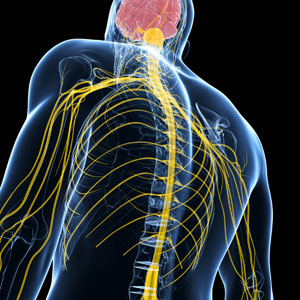
Simple reflex action; and Types of eye defects and their corrections
SIMPLE REFLEX ACTION
Reflex actions are those actions or activities performed by the body which are not under our conscious control. Reflex actions occur very fast and are automatic in responding to stimuli, it is also called involuntary action. Examples include; sweating, sneezing, coughing, swallowing (to a very large extent), beating of the heart etc. A pathway taken by a reflex action is called a reflex arc.
However, other functions in the body that are not reflex actions are still carried in the same way but to the brain (and not the spinal cord). Examples include; walking, hearing, and seeing.
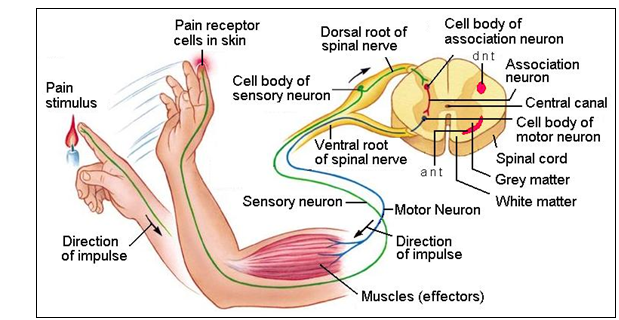
TYPES OF EYE DEFECTS AND THEIR CORRECTIONS
In normal eyes, images are focused on the retina. But when images are formed in front or behind the retina, the person may neither see nor recognize the objects clearly and such eye is said to have a defect.
i. Myopia (short sightedness): images are formed in front of the retina and such person is only able to see objects that are near. This defect can be corrected by using glasses that have concave lenses.


ii. Hypermetropia (long sightedness): images are formed behind the retina and such person is only able to see objects that are far. This can be corrected by wearing glasses with convex lenses.
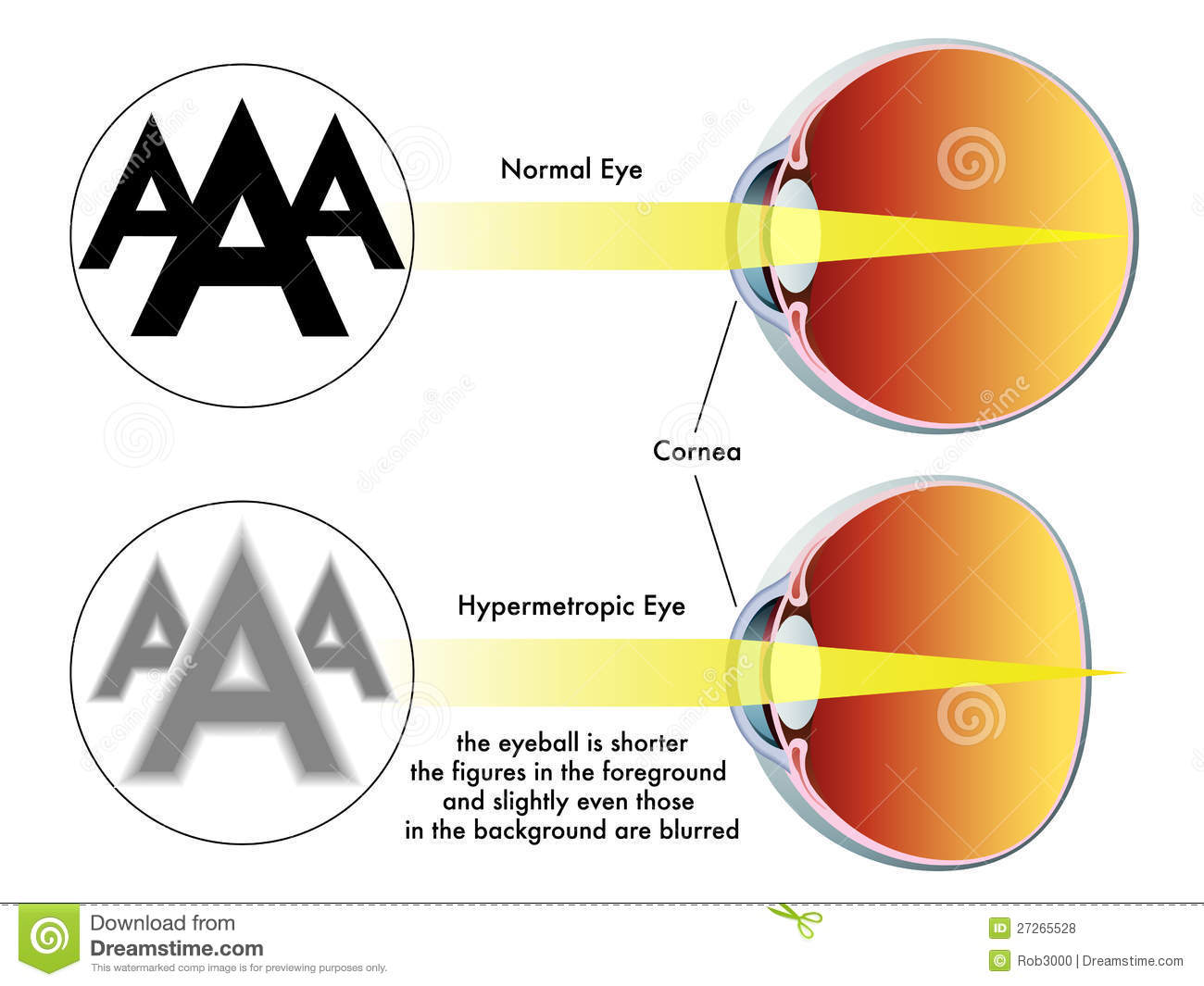

iii. Astigmatism: this occurs when the curvature of the cornea is uneven; sometimes it may be the lens that is uneven. Astigmatism can be corrected by wearing glasses with cylindrical lenses.
Other diseases associated with the eye are cataract, which causes blindness if not treated, colour blindness which is hereditary, conjunctivitis, night blindness and glaucoma.
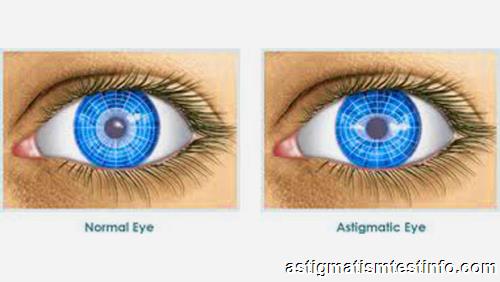
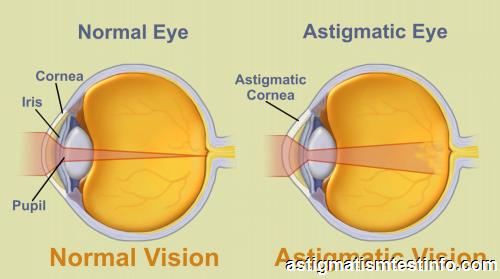
EVALUATION
1 Why do people suffer from;
a. Astigmatism
b. Myopia
c. Hypermetropia
1b. how can the aforementioned defects be corrected
READING ASSIGNMENT: Functional Basic Science for JJS Book 3; by Onyirioha, C. U et al. (Pgs 51-61)
ASSIGNMENT
1. How do reflex actions happen?
2. Mention five parts of each of the following;
a. Ear
b. Nose
c. Eye
d. Skin
e. Tongue
Topic: SENSE ORGANS (revised)
Content: 1. Sense organs and their uses
2. The brain, spinal cord and the nerve as central nervous system(CNS)
3. Simple reflex action
4. Types of eye defects and their corrections
Sense organs and their uses
Human beings receive and react to stimuli or changes that occur within and outside the body of the individual.
A stimulus is anything that makes us to react; and our reaction to stimulus is known as response. Sense organs are part of the human nervous system, there are five sense organs in the human body. They are;
i. Eyes
ii. Ears
iii. Skin
iv. Tongue
v. Nose
THE EYE
The eye enables us to see things and appreciate differences in their size, colour, and shapes. The human eye consists of three layers namely:
i. The outermost layer which is made up of cornea and sclera
ii. The middle layer which contains choroids, ciliary muscle and iris
iii. The inner layer called the retina. The retina is a layer of light sensitive cells known as rods and cones.

A vertical section through the eye
THE EAR
The best known function of the ear is hearing. However, the ear also enables us to maintain our balance.

The human ear
The human ear is composed of three major parts. These are:
3. Outer (external) ear which consists of a funnel shaped pinna (plural: pinnae). The pinna collects sound waves and directs them to the eardrum through the auditory canal
4. Middle ear which is located in the skull contains three bones namely;
a. Hammer (malleus)
b. Anvil (incus)
c. Stirrup (stapes)
5. Inner ear is located deep in the skull. The inner ear is made up oval windows, cochlea and semi-circular canal. The inner ear receives sound impulses from the middle ear and transmits them through the auditory nerves to the brain for interpretation.
FUNCTIONS OF EAR
i. For hearing
ii. Maintaining balance
iii. Determining the nature and direction of sound.
THE NOSE
The nose is made up of two nostrils, there are certain small glands that produce mucus, a watery substance that keeps the nose moist.
FUNCTIONS OF THE NOSE
i. The nose is used for breathing
ii. For perceiving smell; the sensation of smell is sent to the brain by the olfactory nerves.
THE TONGUE
The tongue is used to detect tastes of things thereby differentiating sweet, sour, bitter, salty and tasteless substances. Taste impulses picked up by the taste buds are conducted through the sensory nerves (neurons) to the brain for interpretation.
THE SKIN
The skin is the largest sense organ in the body. It covers the whole body, it contains several distinct receptors (sensory cells) which enables it to receive and respond to external stimuli.

Cut-section of human skin
FUNCTIONS OF THE SKIN
i. The skin is used for detecting stimulus of touch
ii. For detecting stimulus of pressure and pain
iii. For sensing changes in temperature
LESSON 29
The brain, spinal cord and nerves (central nervous system)
The brain and spinal cord constitute the central nervous system. The nerves and the neurons form the peripheral nervous system. The nervous system is concerned with coordination and communication of internal and external sensations in living organisms.
THE BRAIN
The brain is the major coordinating and control center of all body activities, it is described as the main switching unit because it receives, interprets and responds to impulses. It is a delicate organ of mass of neurons covered up by a three-layered connective tissue called meninges. The brain is further protected by a bony structure called skull

THE SPINAL CORD
The spinal cord is the link between the brain and nerves. A section through the spinal cord reveals two types of nerve tissues namely; (i) grey matter (ii) white matter.
The spinal cord does the following;
i. It carries impulses to and from the brain
ii. it controls reflex activities

THE NERVES
The nerves are extensions from the spinal cord. They link the brain and spinal cord to the rest of the body. Hence, they are described as peripheral nerves.

Simple reflex action; and Types of eye defects and their corrections
SIMPLE REFLEX ACTION
Reflex actions are those actions or activities performed by the body which are not under our conscious control. Reflex actions occur very fast and are automatic in responding to stimuli, it is also called involuntary action. Examples include; sweating, sneezing, coughing, swallowing (to a very large extent), beating of the heart etc. A pathway taken by a reflex action is called a reflex arc.
However, other functions in the body that are not reflex actions are still carried in the same way but to the brain (and not the spinal cord). Examples include; walking, hearing, and seeing.

TYPES OF EYE DEFECTS AND THEIR CORRECTIONS
In normal eyes, images are focused on the retina. But when images are formed in front or behind the retina, the person may neither see nor recognize the objects clearly and such eye is said to have a defect.
i. Myopia (short sightedness): images are formed in front of the retina and such person is only able to see objects that are near. This defect can be corrected by using glasses that have concave lenses.


ii. Hypermetropia (long sightedness): images are formed behind the retina and such person is only able to see objects that are far. This can be corrected by wearing glasses with convex lenses.


iii. Astigmatism: this occurs when the curvature of the cornea is uneven; sometimes it may be the lens that is uneven. Astigmatism can be corrected by wearing glasses with cylindrical lenses.
Other diseases associated with the eye are cataract, which causes blindness if not treated, colour blindness which is hereditary, conjunctivitis, night blindness and glaucoma.


EVALUATION
1 Why do people suffer from;
a. Astigmatism
b. Myopia
c. Hypermetropia
1b. how can the aforementioned defects be corrected
READING ASSIGNMENT: Functional Basic Science for JJS Book 3; by Onyirioha, C. U et al. (Pgs 51-61)
ASSIGNMENT
1. How do reflex actions happen?
2. Mention five parts of each of the following;
a. Ear
b. Nose
c. Eye
d. Skin
e. Tongue
WEEK 9
LESSON 30
Topic: REPRODUCTIVE HEALTH
Content:
1. Meaning and significance of reproductive health
- Care and protection of the reproductive system
2. Sexually transmitted infections
- Consequences of these infections
3. Coping skills for preserving reproductive health
MEANING OF REPRODUCTIVE HEALTH
Reproductive health refers to all activities by individuals or group geared towards proper care, protection and maintenance of reproductive organs.
Significance of reproductive health
i. It helps to check or reduce the spread of diseases.
ii. It promotes responsible sexual behaviour
iii. It reduces incidence of unwanted pregnancies
iv. It provides accurate information about the workings of our body such as menstruation, flushes of heat, menopause, voice deepening in males that recently attained maturity, etc.
v. It provides sex education
vi. Sex determination; incidences of recurring same sex offspring was wrongly believed to be the fault of the mother.
vii. It provides solutions to social problems like childlessness and barrenness.
viii. It helps intending couples to avoid inherited diseases such as HIV/AIDS, diabetes status, genotype etc.
ix. It provides easy medical identification, diagnosis and treatment of diseases and ailments.
x. Family planning; this is the method of controlling family size by spacing children and checking the number of children to have.

CARE AND PROTECTION OF THE REPRODUCTIVE SYSTEM:
CARE
i. Proper cleaning of organs; washing the genital areas (daily and after intercourse) with soap and water containing disinfectant may help reduce the risk of some infections
ii. Undergarments such as pants, singlet, underskirts, brassieres, etc should be washed regularly with disinfected water. They should be spread outside in the sun and properly ironed to kill eggs and spores of micro-organisms.
iii. Menstruating females need to maintain higher level of personal hygiene. Different brands of sanitary towels are available in the market for use.
PROTECTION
i. Avoiding promiscuity: abstain from pre-marital and extra-marital sex. Sexually active young adults should stick to one faithful sexual partner.
ii. Using a protective covering such as sheath (condom) or diaphragm: though they don’t give absolute protection but they reduce the risk of infections, they also prevent unwanted pregnancies
iii. Prompt report of cases of infection
iv. Contact tracing; it is advisable to inform sexual partner in case of infection so that all affected parties are treated and the spread is curtailed.
v. Using clean toilets and tissue papers only
vi. Avoiding physical conflicts
vii. Seeking appropriate medical care.
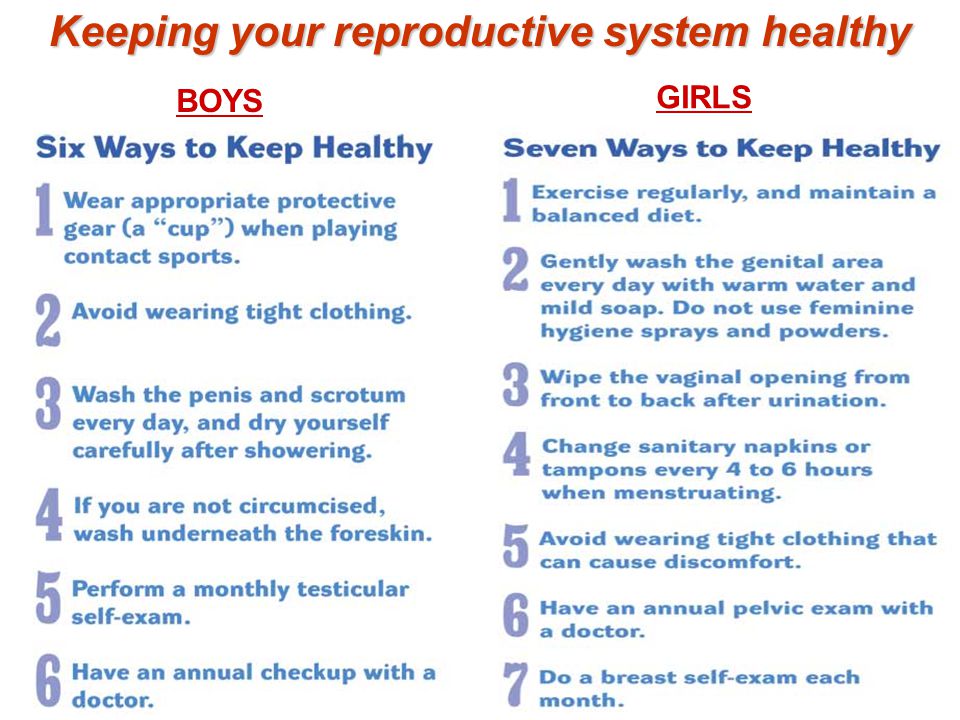
LESSON 31
SEXUALLY TRANSMITTED INFECTIONS (STIs):
These are diseases contracted through sexual intercourse with an infected person. In spite of increasing knowledge in the area of sex education. STIs are on the increase worldwide. Examples include; i. gonorrhea ii. Syphilis iii. HIV/ AIDS.

GONORRHEA
This is a sexual infection caused by a bacterium, Neissera gonorrhea. It grows in the tissues that line the male and female reproductive tracts. Apart from being sexually transmitted, it can also be transmitted from mother to her child at birth.
Symptoms:
a. Irritation and bleeding of the genitals
b. Difficulty bin passing urine
c. pains
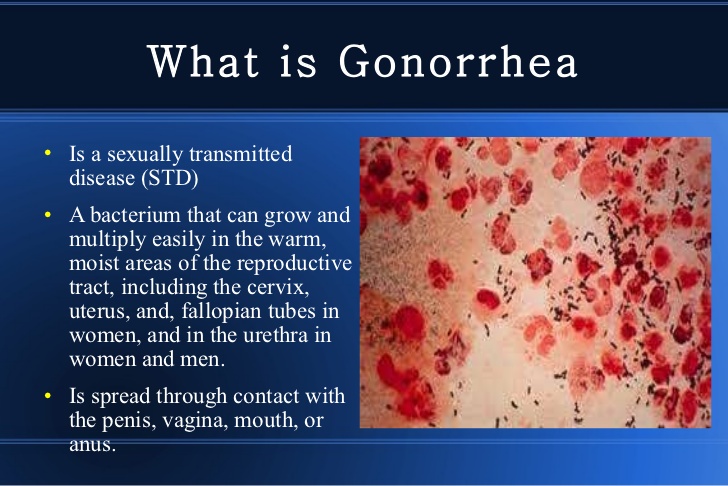
SYPHILIS
This is a more severe venereal disease caused by a bacterium, Treponema pallidum. if untreated, it may cause mental illness as a result of damage to the brain and heart as well as nervous system. It can be inherited from infected mothers and the children will be born blind.
Symptoms:
a. Small painless sores on the genitals few weeks after intercourse with an infected person.
b. Headache, fever and pain in the joints.
c. Itching and rashes on the hands and feet.
d. Sterility
e. Blindness in children of infected mothers.
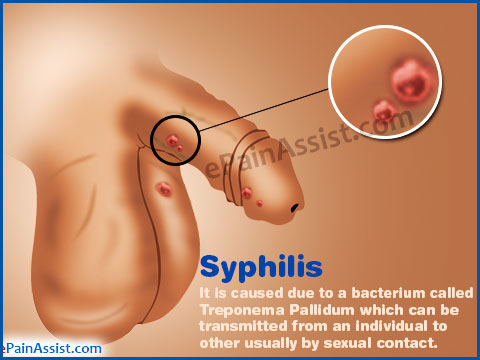
HIV/ AIDS
This is transmitted by a virus known as Human Immunodeficiency Virus (HIV). This virus attacks the immune system and renders the body’s defense system useless. It also makes one susceptible to other infections.
HIV develops into Acquired Immune Deficiency Syndrome (AIDS) if not controlled/checked by taking appropriate drugs with proper and adequate diet and a suitable lifestyle.

Symptoms:
a. Extensive tiredness
b. Fever and night sweats which may also last for a long period of time
c. Persistent diarrhea with no obvious cause
d. Persistent dry cough and shortness of breath
e. Rashes on skin shown as hard pink or purple or dark blotches appearing on the eyelids and mouth.
f. Swollen glands
g. Unexpected excessive weight loss
Note: AIDS has no known cure yet.

CONSEQUENCES OF THESE INFECTIONS
(1) Ill health
(2) Damage to the reproductive system
(3) Painful urination
(4) Stigmatization
(5) Sterility
(6) Interference with studies, career and way of life.
(7) Blindness
(8) Death
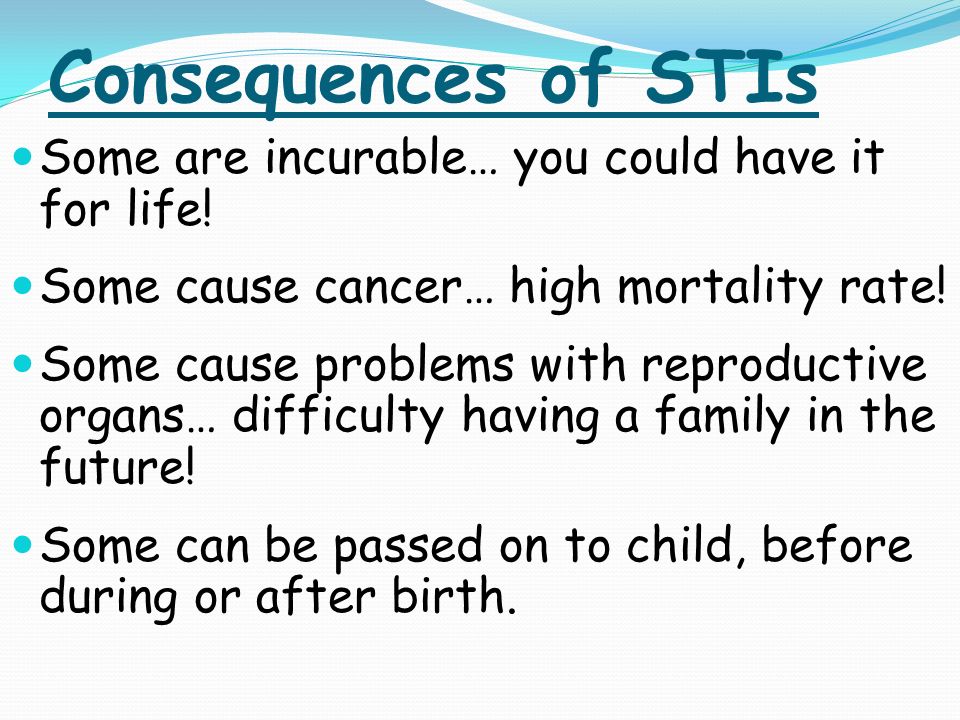
Coping skills for preserving reproductive health
1. Abstinence
2. Gainful employment
3. Develop hobbies such as reading novels, sports, etc. learn vocation such as hairdressing, bead making, etc.
4. Be sexually educated: form peer group to organize and carry out stimulating and interesting activities.
5. Do not engage in activities that are against preservation.
6. Have something to look forward to. Bear in mind the consequences of misguided adventures.

EVALUATION:
(1) Explain reproductive health
(2) What is the significance of reproductive health?
READING ASSIGNMENT: Functional Basic Science for JJS Book 3; by Onyirioha, C. U et al. (Pgs 62-69)
ASSIGNMENT:
(1) Knowledge of reproductive health can: (A) help prevent diseases (B) cause problems for young ones (C) lead young ones astray (D) result in unwanted pregnancies
(2) Reproductive health promotes (A) promiscuity (B) immorality (C) responsibility (D) irresponsibility
(3) Family planning helps; (A) reduce the size of one’s family Sub-Topic 4: Consequences of these infections (C) increase death rate (D) a family manage its resources (D) a family squanders its resources
(4) State two consequences of STIs
(5) List five STIs.
Topic: REPRODUCTIVE HEALTH
Content:
1. Meaning and significance of reproductive health
- Care and protection of the reproductive system
2. Sexually transmitted infections
- Consequences of these infections
3. Coping skills for preserving reproductive health
MEANING OF REPRODUCTIVE HEALTH
Reproductive health refers to all activities by individuals or group geared towards proper care, protection and maintenance of reproductive organs.
Significance of reproductive health
i. It helps to check or reduce the spread of diseases.
ii. It promotes responsible sexual behaviour
iii. It reduces incidence of unwanted pregnancies
iv. It provides accurate information about the workings of our body such as menstruation, flushes of heat, menopause, voice deepening in males that recently attained maturity, etc.
v. It provides sex education
vi. Sex determination; incidences of recurring same sex offspring was wrongly believed to be the fault of the mother.
vii. It provides solutions to social problems like childlessness and barrenness.
viii. It helps intending couples to avoid inherited diseases such as HIV/AIDS, diabetes status, genotype etc.
ix. It provides easy medical identification, diagnosis and treatment of diseases and ailments.
x. Family planning; this is the method of controlling family size by spacing children and checking the number of children to have.

CARE AND PROTECTION OF THE REPRODUCTIVE SYSTEM:
CARE
i. Proper cleaning of organs; washing the genital areas (daily and after intercourse) with soap and water containing disinfectant may help reduce the risk of some infections
ii. Undergarments such as pants, singlet, underskirts, brassieres, etc should be washed regularly with disinfected water. They should be spread outside in the sun and properly ironed to kill eggs and spores of micro-organisms.
iii. Menstruating females need to maintain higher level of personal hygiene. Different brands of sanitary towels are available in the market for use.
PROTECTION
i. Avoiding promiscuity: abstain from pre-marital and extra-marital sex. Sexually active young adults should stick to one faithful sexual partner.
ii. Using a protective covering such as sheath (condom) or diaphragm: though they don’t give absolute protection but they reduce the risk of infections, they also prevent unwanted pregnancies
iii. Prompt report of cases of infection
iv. Contact tracing; it is advisable to inform sexual partner in case of infection so that all affected parties are treated and the spread is curtailed.
v. Using clean toilets and tissue papers only
vi. Avoiding physical conflicts
vii. Seeking appropriate medical care.

LESSON 31
SEXUALLY TRANSMITTED INFECTIONS (STIs):
These are diseases contracted through sexual intercourse with an infected person. In spite of increasing knowledge in the area of sex education. STIs are on the increase worldwide. Examples include; i. gonorrhea ii. Syphilis iii. HIV/ AIDS.

GONORRHEA
This is a sexual infection caused by a bacterium, Neissera gonorrhea. It grows in the tissues that line the male and female reproductive tracts. Apart from being sexually transmitted, it can also be transmitted from mother to her child at birth.
Symptoms:
a. Irritation and bleeding of the genitals
b. Difficulty bin passing urine
c. pains

SYPHILIS
This is a more severe venereal disease caused by a bacterium, Treponema pallidum. if untreated, it may cause mental illness as a result of damage to the brain and heart as well as nervous system. It can be inherited from infected mothers and the children will be born blind.
Symptoms:
a. Small painless sores on the genitals few weeks after intercourse with an infected person.
b. Headache, fever and pain in the joints.
c. Itching and rashes on the hands and feet.
d. Sterility
e. Blindness in children of infected mothers.

HIV/ AIDS
This is transmitted by a virus known as Human Immunodeficiency Virus (HIV). This virus attacks the immune system and renders the body’s defense system useless. It also makes one susceptible to other infections.
HIV develops into Acquired Immune Deficiency Syndrome (AIDS) if not controlled/checked by taking appropriate drugs with proper and adequate diet and a suitable lifestyle.

Symptoms:
a. Extensive tiredness
b. Fever and night sweats which may also last for a long period of time
c. Persistent diarrhea with no obvious cause
d. Persistent dry cough and shortness of breath
e. Rashes on skin shown as hard pink or purple or dark blotches appearing on the eyelids and mouth.
f. Swollen glands
g. Unexpected excessive weight loss
Note: AIDS has no known cure yet.

CONSEQUENCES OF THESE INFECTIONS
(1) Ill health
(2) Damage to the reproductive system
(3) Painful urination
(4) Stigmatization
(5) Sterility
(6) Interference with studies, career and way of life.
(7) Blindness
(8) Death
Coping skills for preserving reproductive health
1. Abstinence
2. Gainful employment
3. Develop hobbies such as reading novels, sports, etc. learn vocation such as hairdressing, bead making, etc.
4. Be sexually educated: form peer group to organize and carry out stimulating and interesting activities.
5. Do not engage in activities that are against preservation.
6. Have something to look forward to. Bear in mind the consequences of misguided adventures.

EVALUATION:
(1) Explain reproductive health
(2) What is the significance of reproductive health?
READING ASSIGNMENT: Functional Basic Science for JJS Book 3; by Onyirioha, C. U et al. (Pgs 62-69)
ASSIGNMENT:
(1) Knowledge of reproductive health can: (A) help prevent diseases (B) cause problems for young ones (C) lead young ones astray (D) result in unwanted pregnancies
(2) Reproductive health promotes (A) promiscuity (B) immorality (C) responsibility (D) irresponsibility
(3) Family planning helps; (A) reduce the size of one’s family Sub-Topic 4: Consequences of these infections (C) increase death rate (D) a family manage its resources (D) a family squanders its resources
(4) State two consequences of STIs
(5) List five STIs.